WIPs 2022
Martha O'Kennon
Ever since learning about WIPs from Zachary Danko and Chris Angell on iNat, I've been fascinated, or should I say addicted to finding them. Chris said it this way: Iridescence and wing interference patterns look similar because they're both caused by diffracted light waves interfering with each other. However, iridescent colors shift depending on what angle you're looking at them, while WIPs are actually stable, as long as you have a dark enough background for them to be visible. It took me quite a while to stop calling WIPs Iridescence, but now I think I've got my mind wrapped around this. The first time I saw this pattern was when I submitted a picture of the Fly Asteia beata and it looked as if it had green wings. Picture 2 was an older version of A. beata, and it didn't have any obvious color to it, but I successively added color in Photos and it added the greenish tint to the picture. So it really now looks green. This must be the underlying color produced from the Wing Interference Pattern phenomenon.

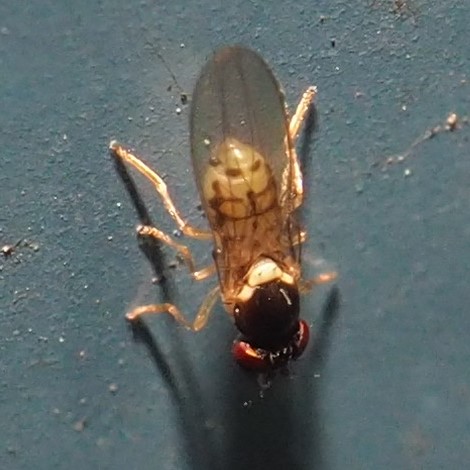
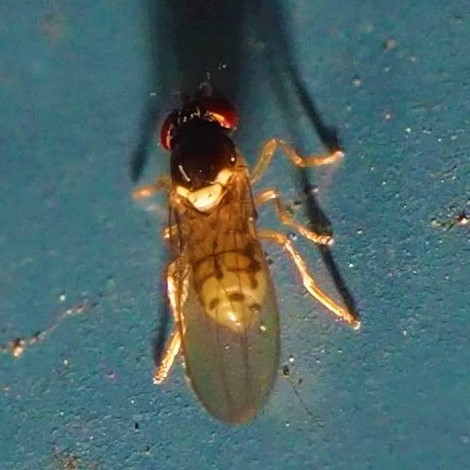
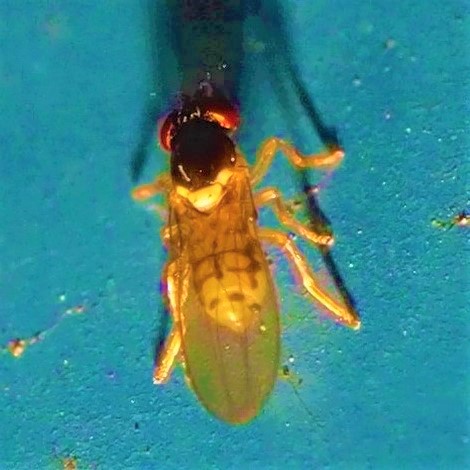
Sometimes you can get an inkling of what the underlying WIP will be. Here's a nice Greenbottle (Bluebottle?) Fly, and you can see how the WIP develops. Surprise! There's red in there too.
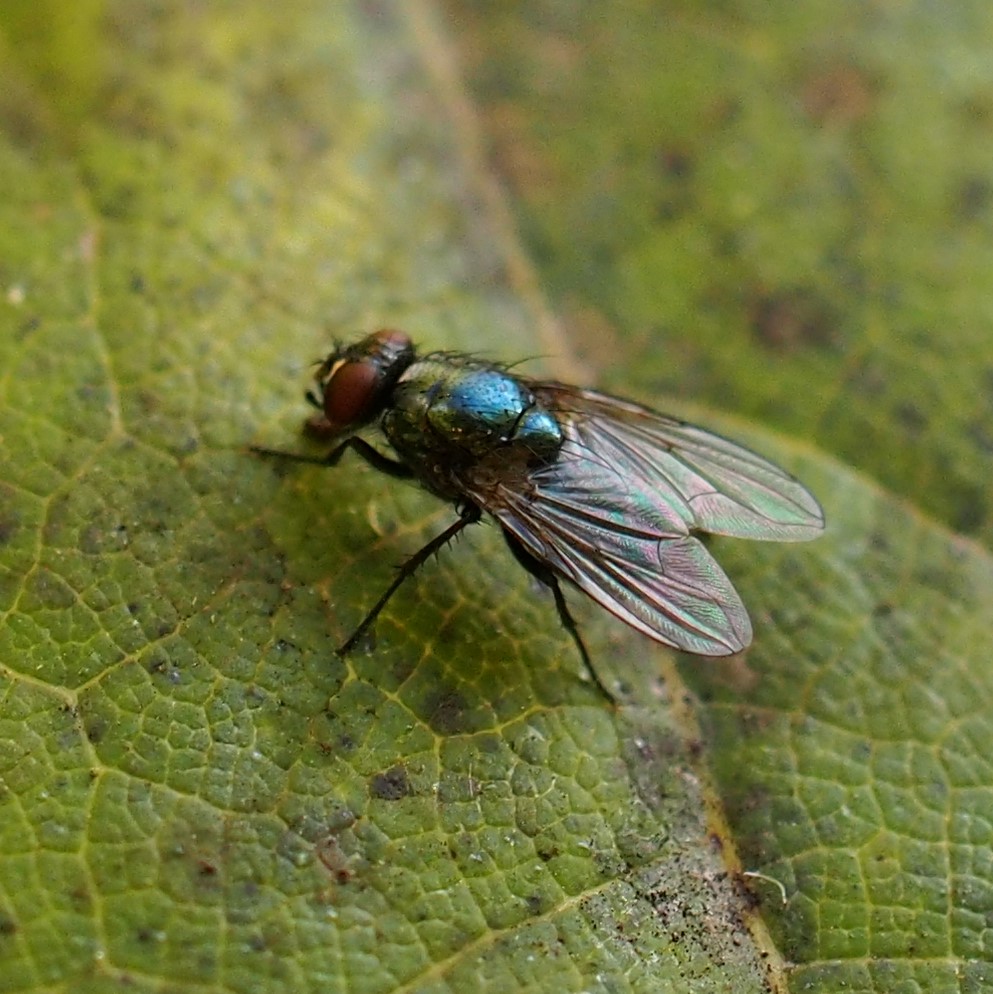
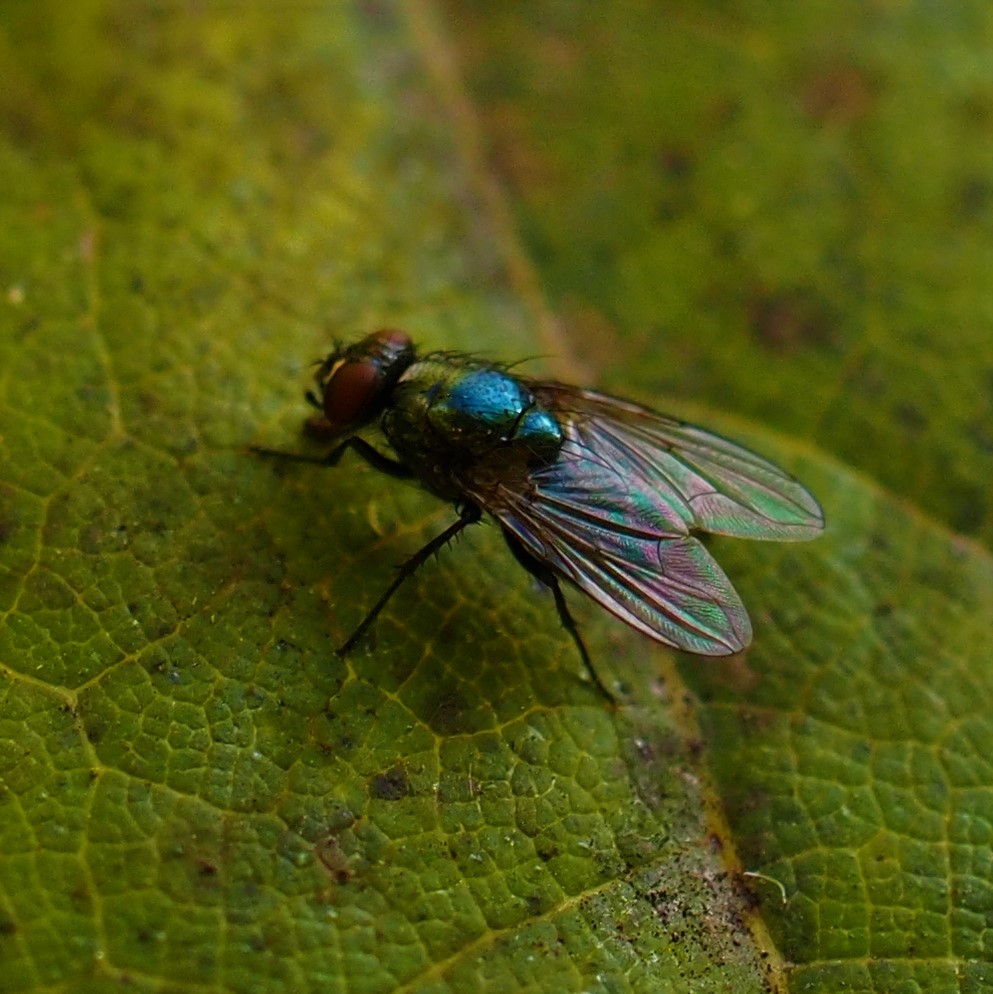
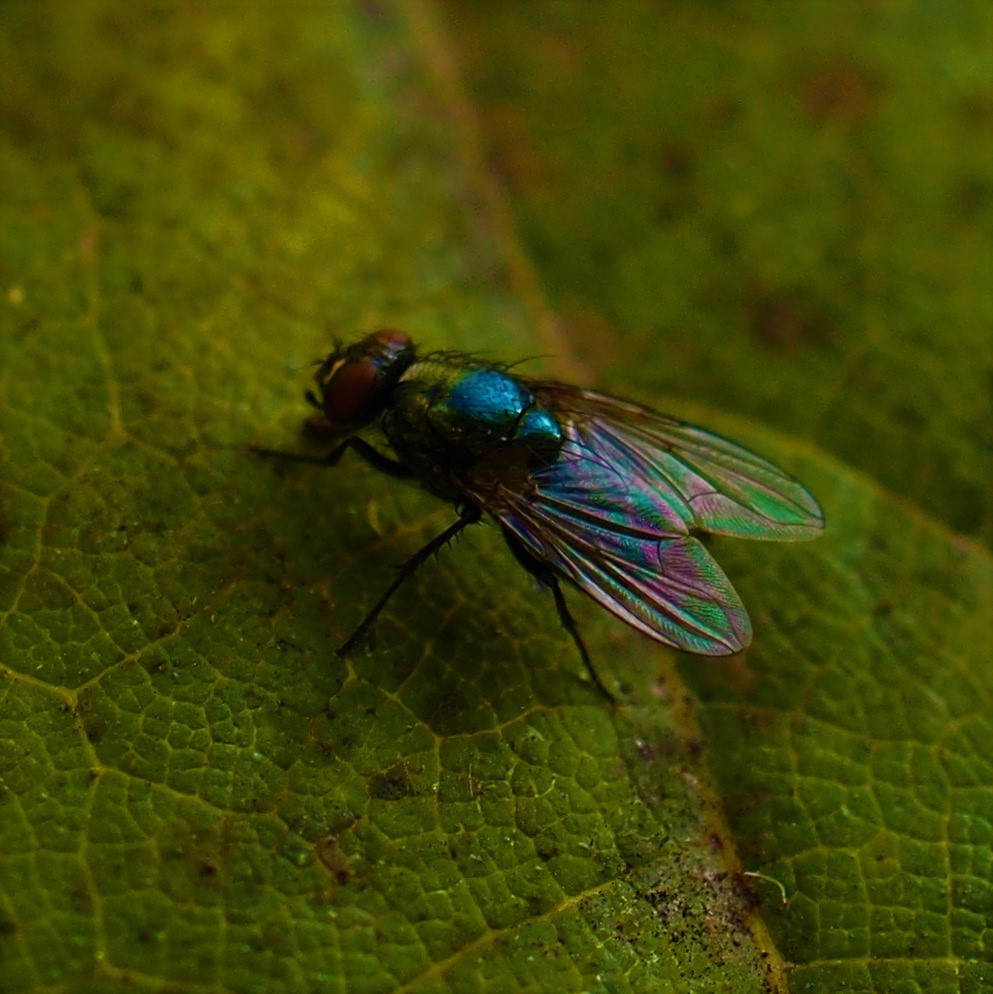
Here's a similar Fly. Note the red bits sneaking into the last picture.
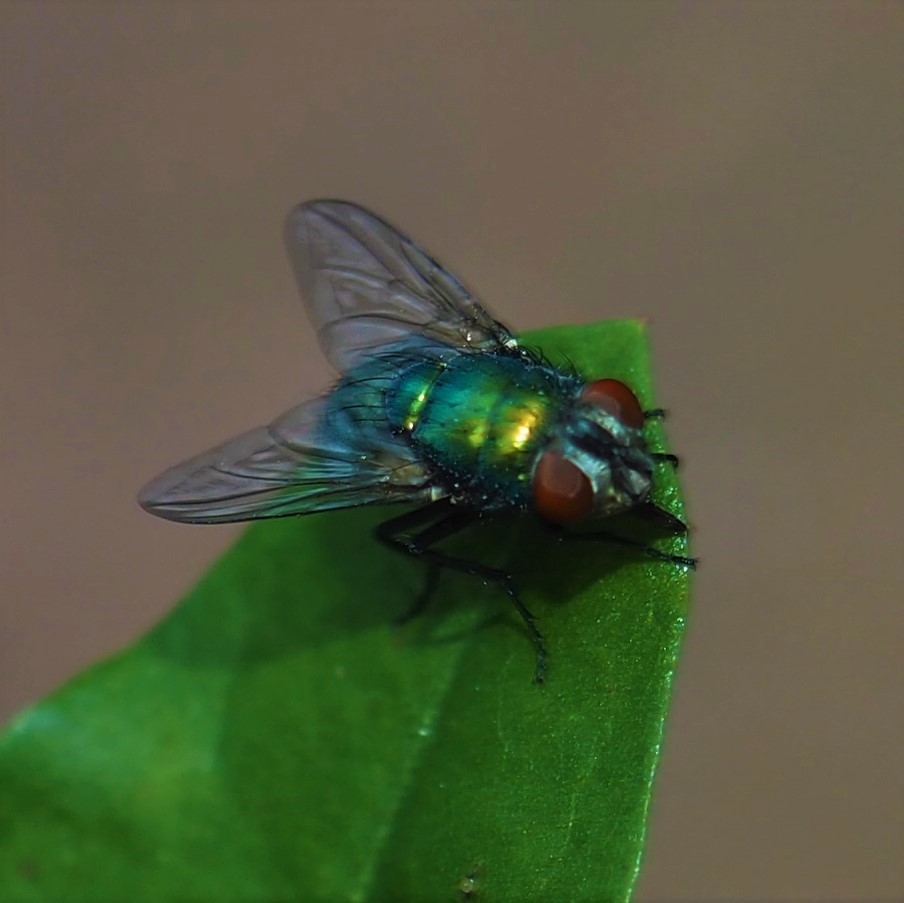

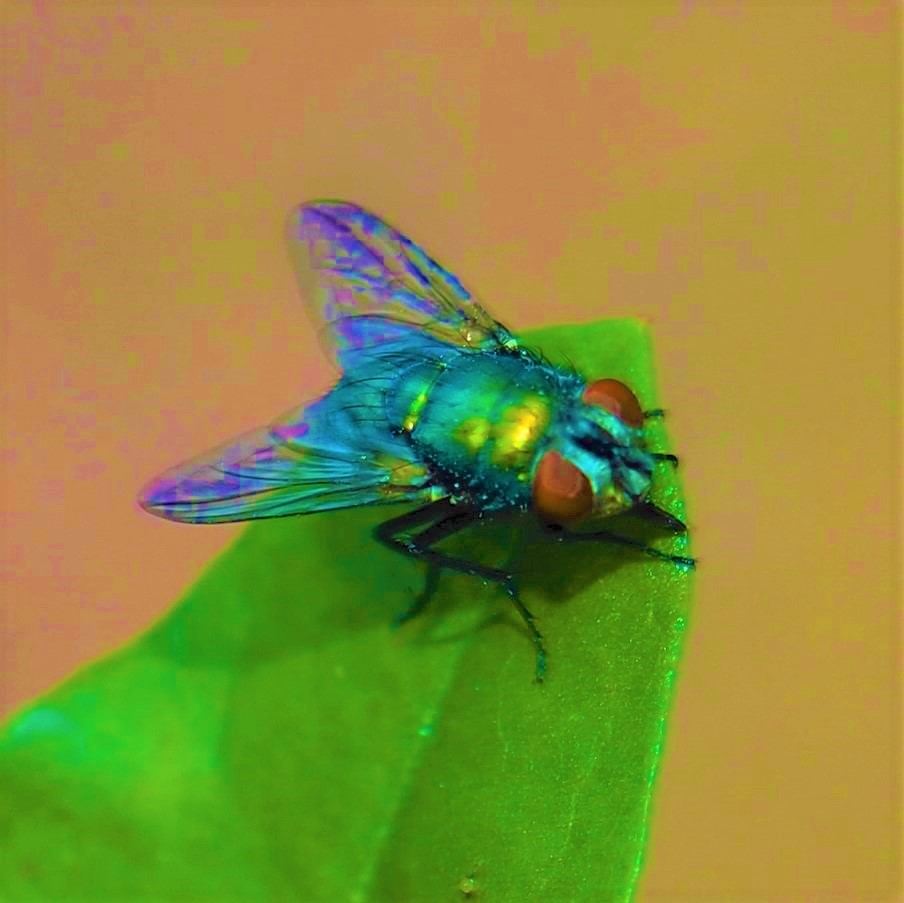
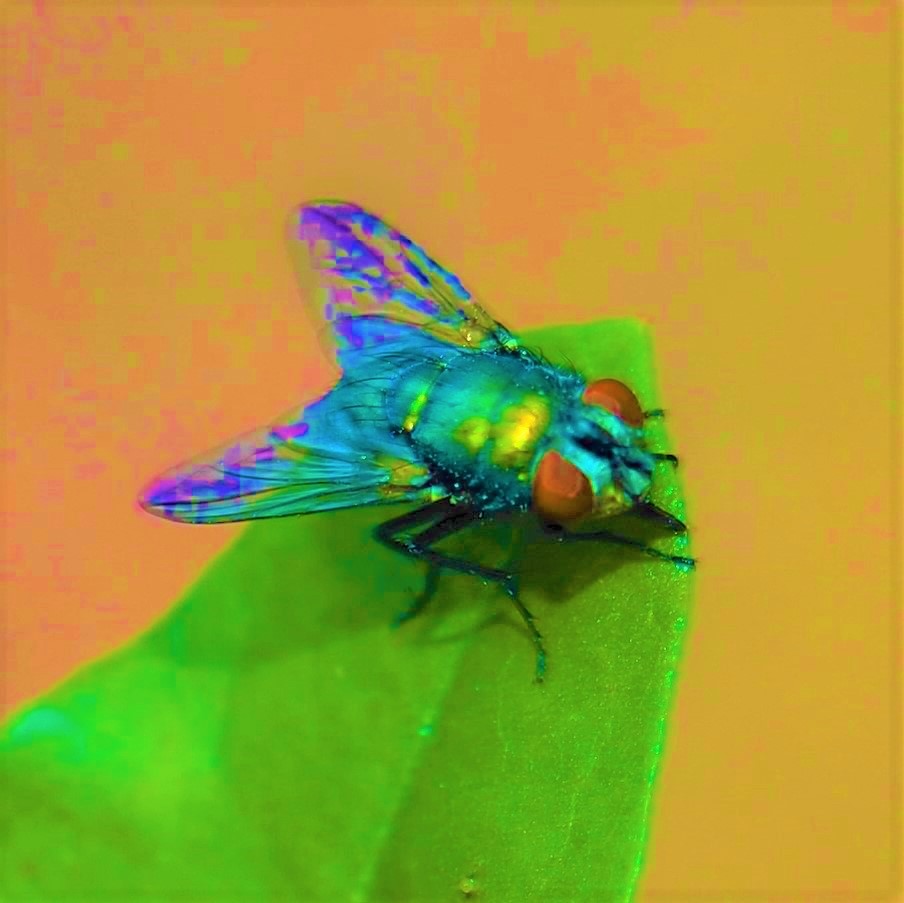
This works with Hover Flies too. Here is a nice little Toxomerus geminatus. We see the hint of colors in the original but it really pops by the end.
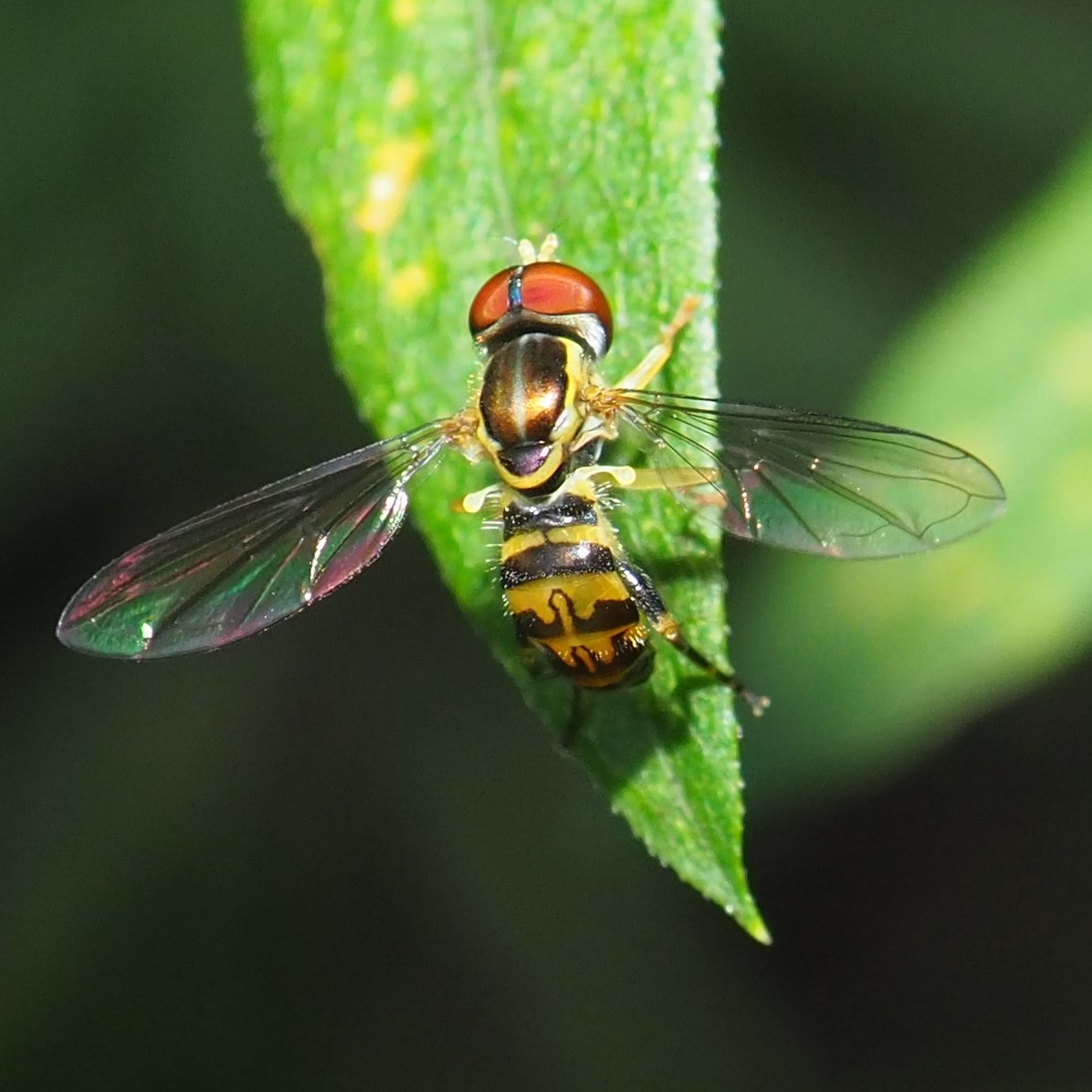
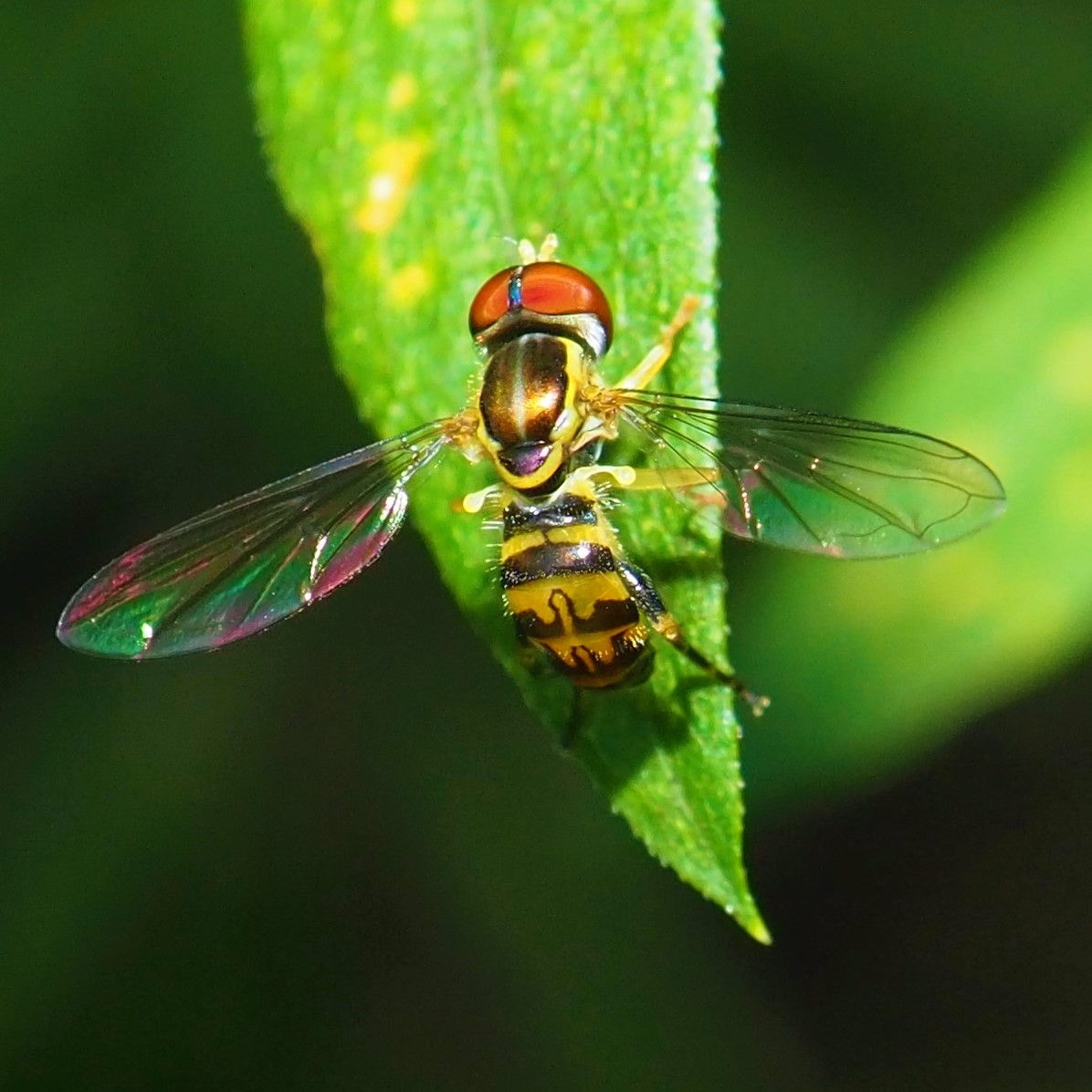
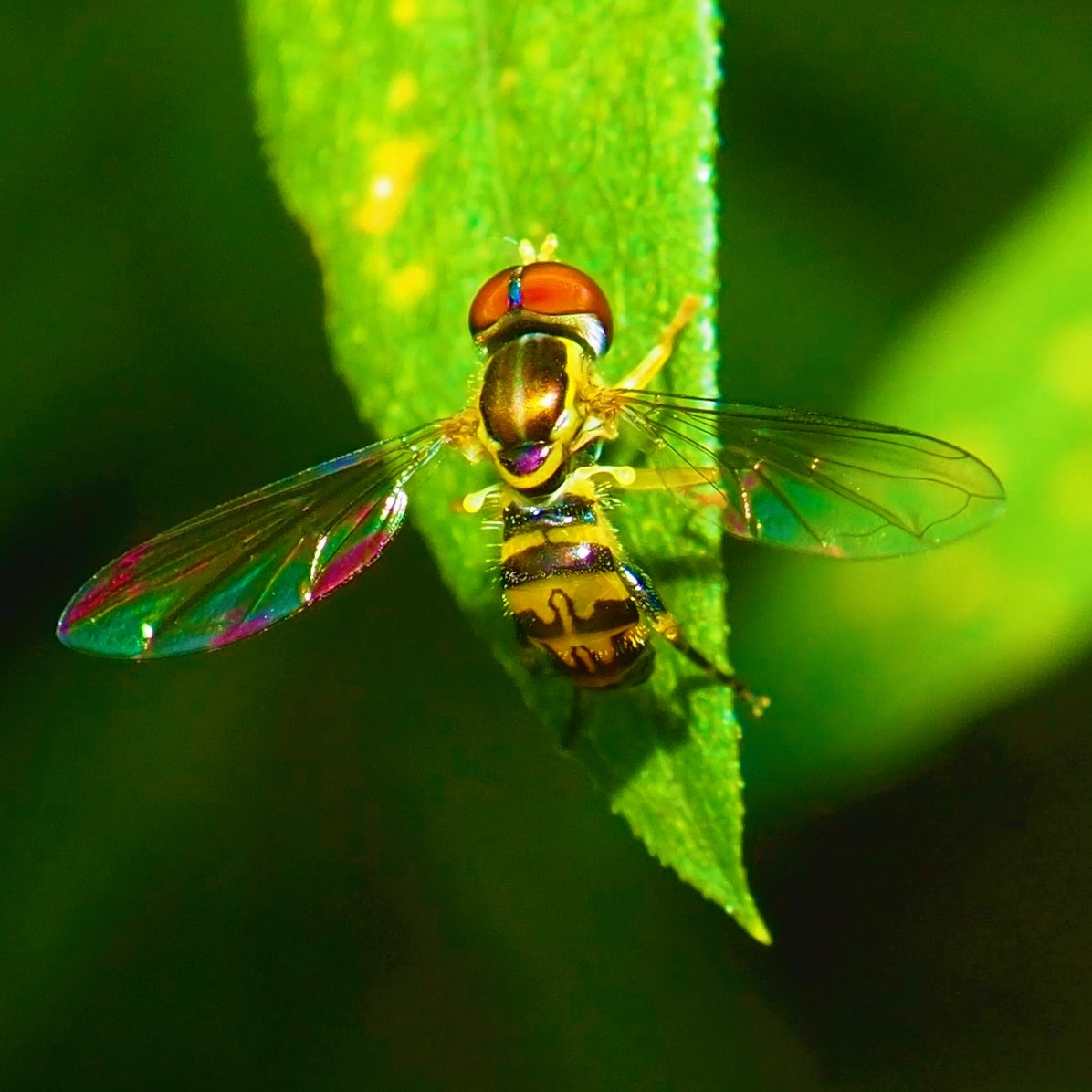
This little Leaf Miner Fly doesn't seem to have much hope of color besides its brilliant yellow.
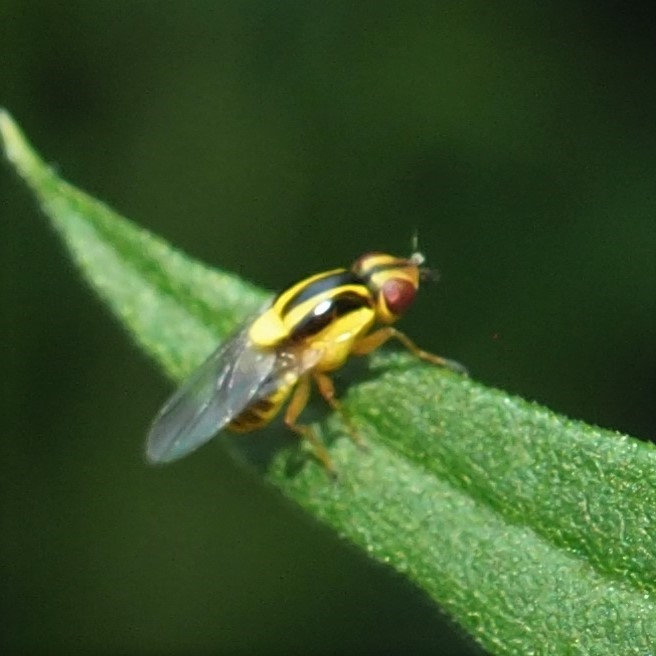
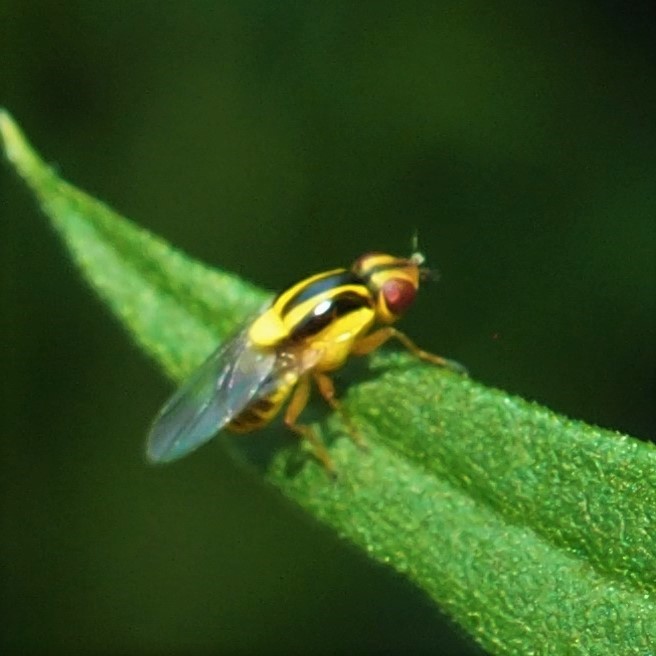
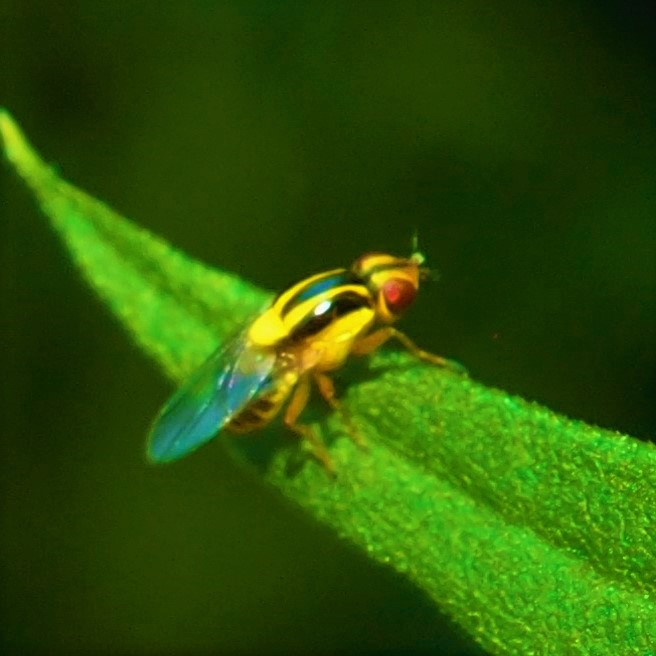
The gorgeous little Longlegged Flies are already so brilliant, but guess what.

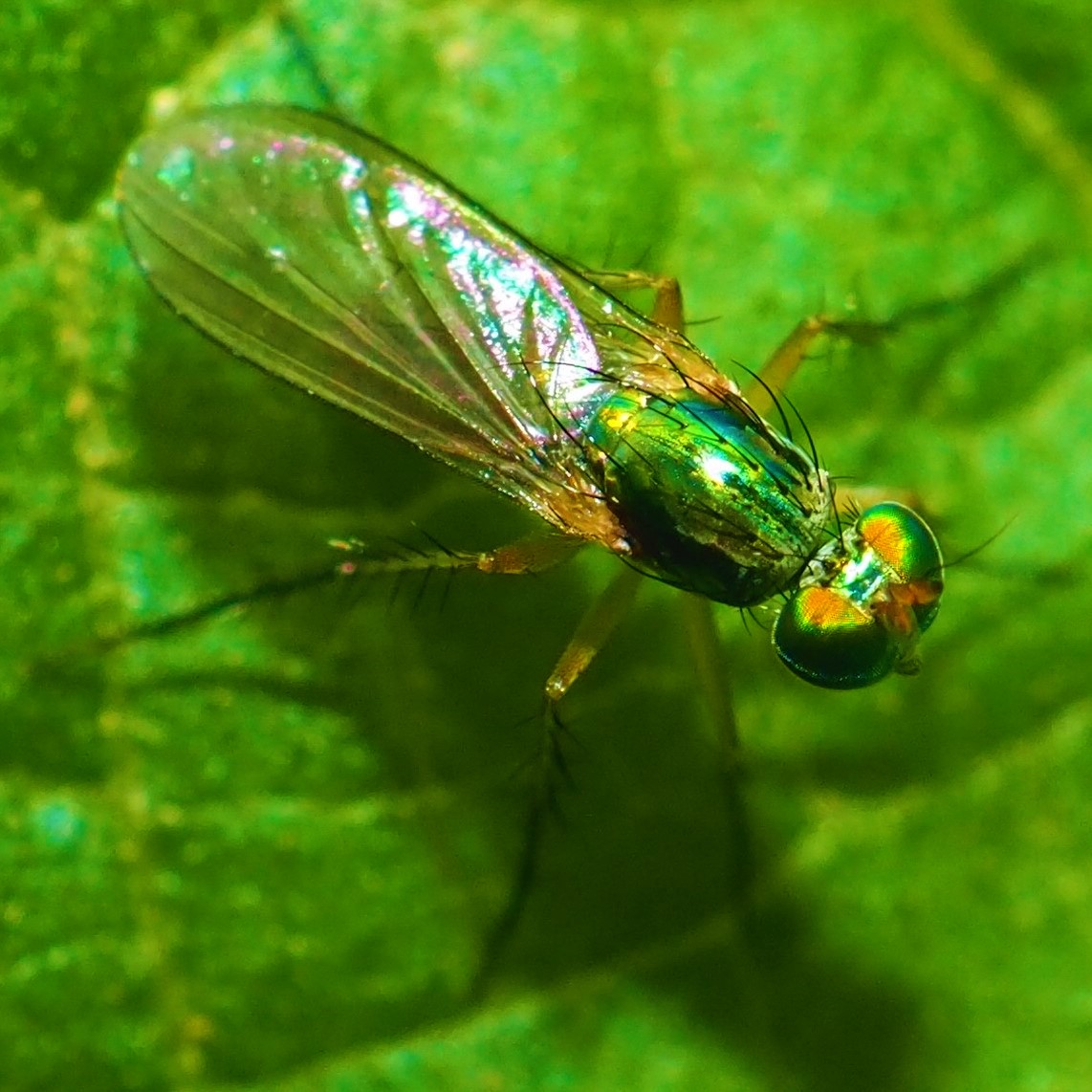
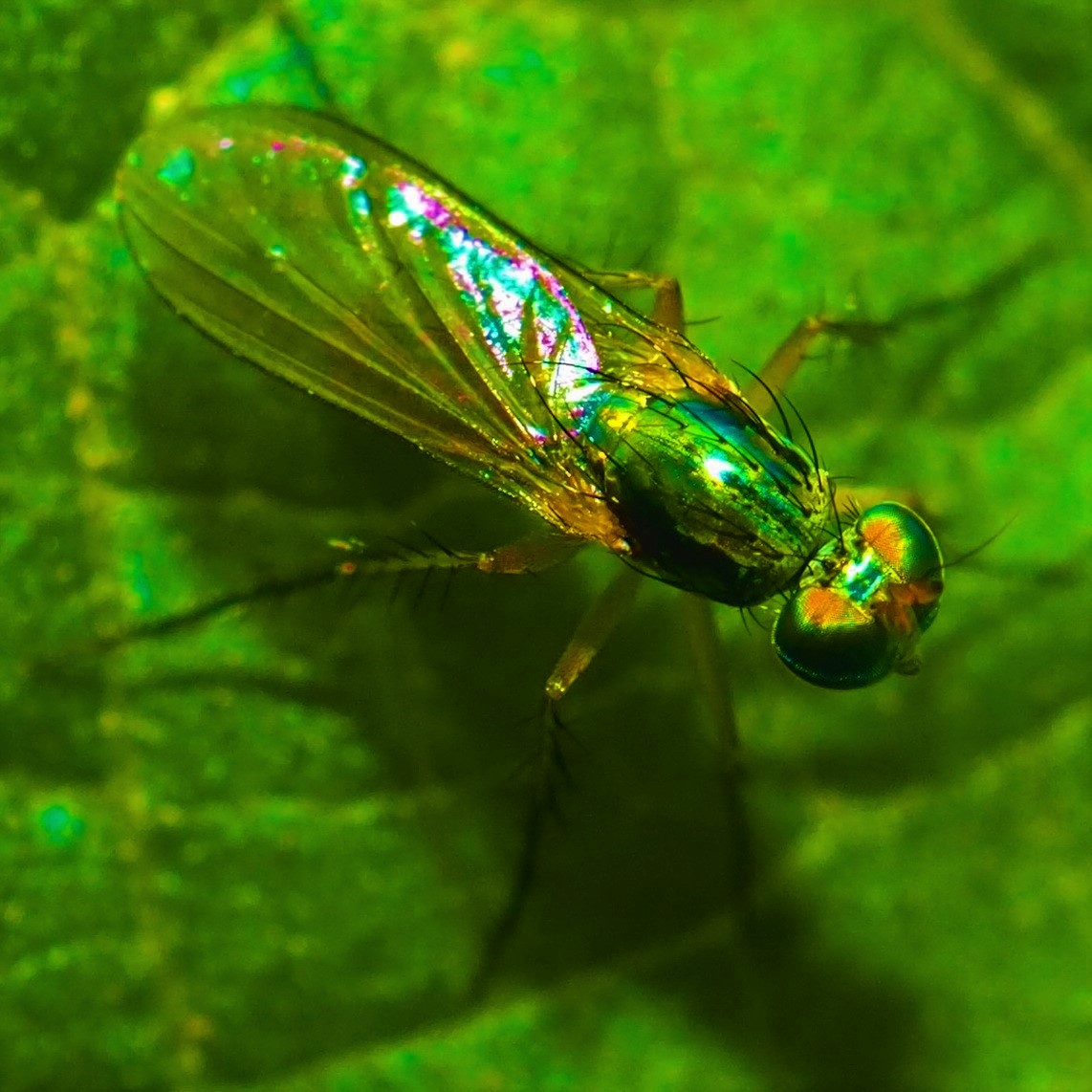
Wasps with transparent wings also have WIP possibilities.
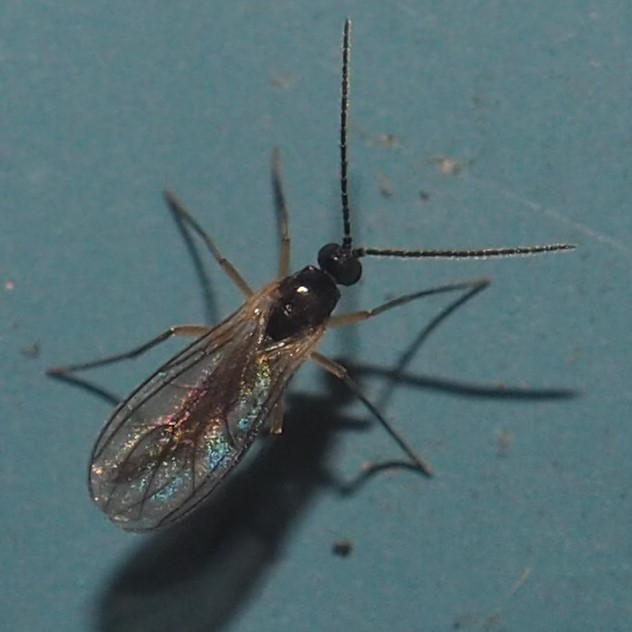
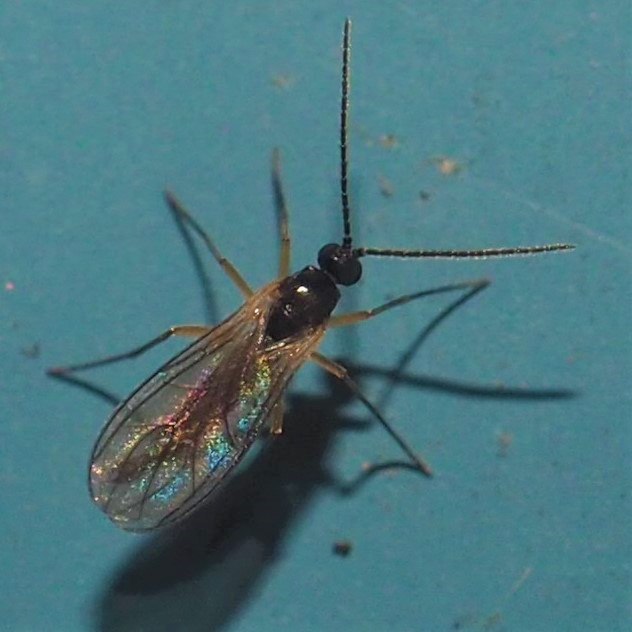
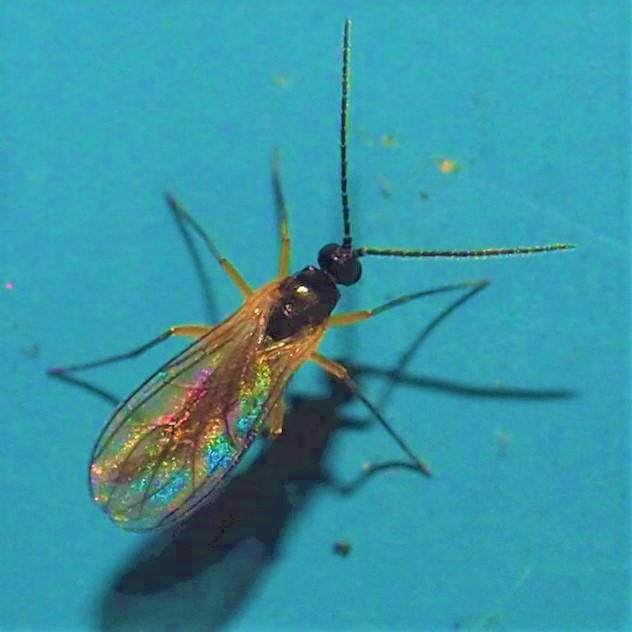
Another Wasp.
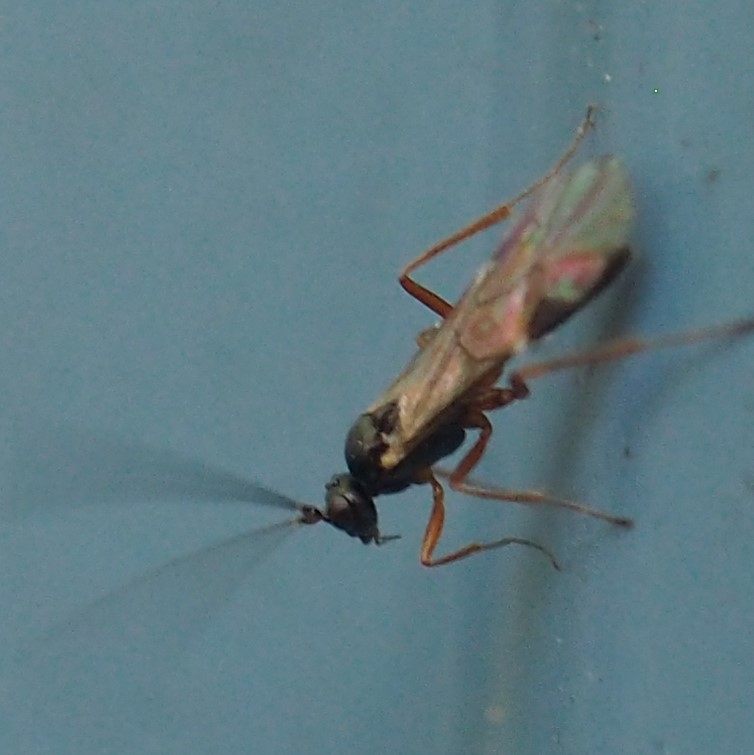
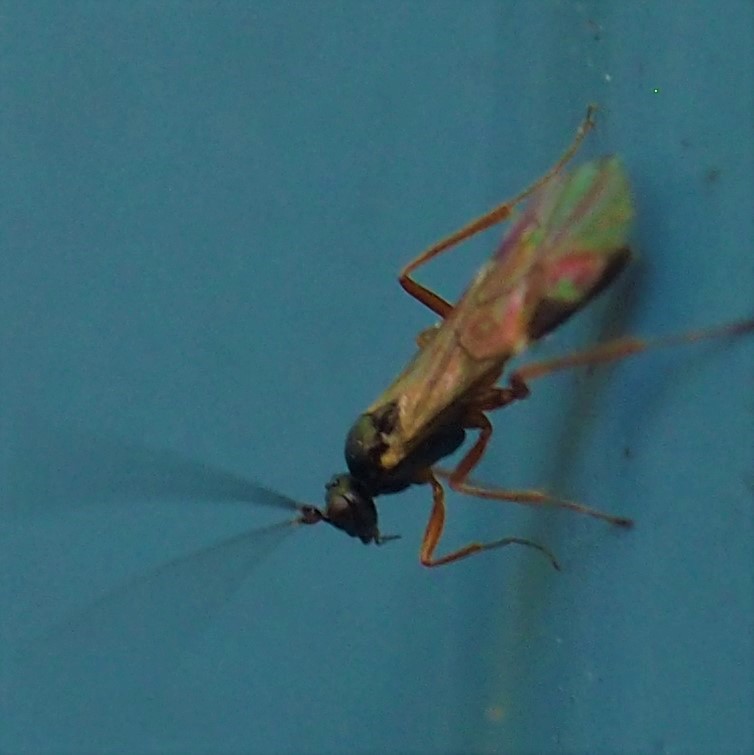
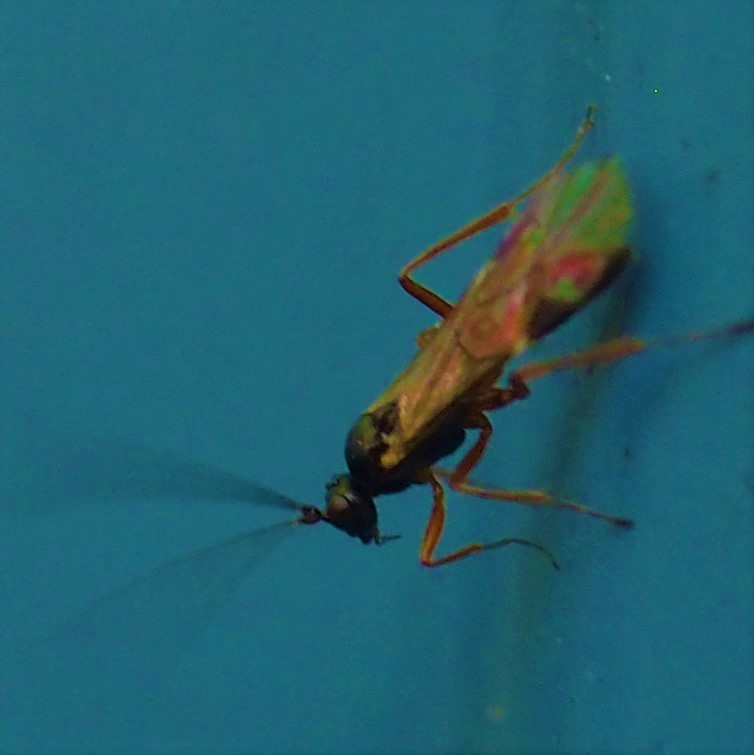
A little Braconid Wasp.
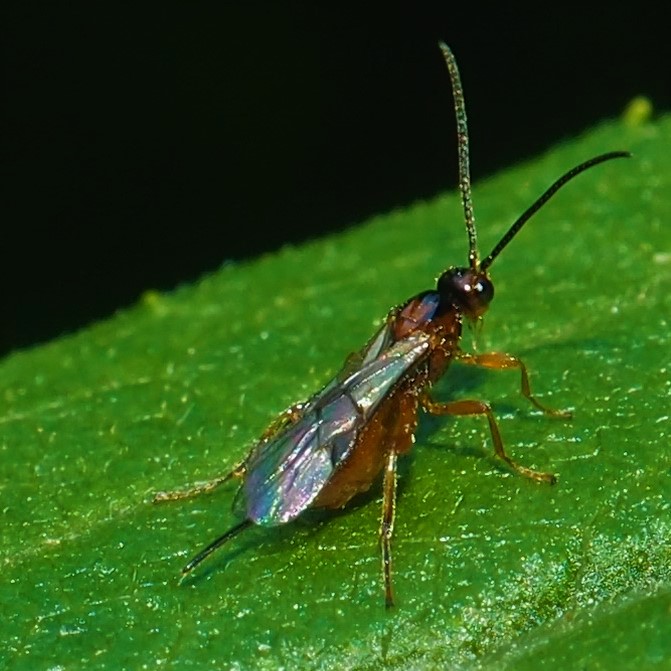
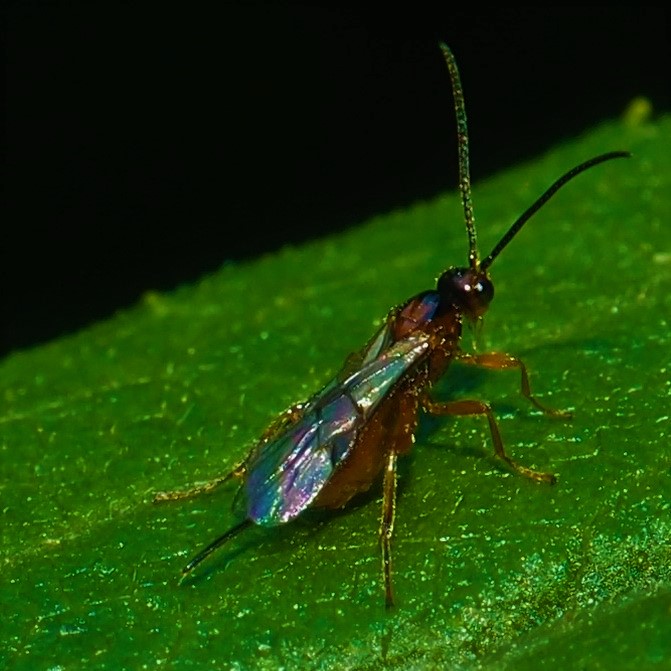
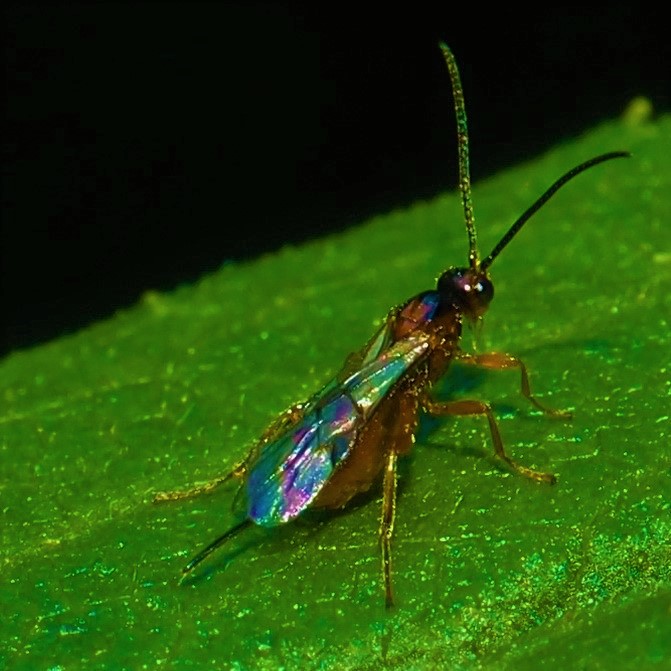
Another Wasp, this one with a Spider as prey.
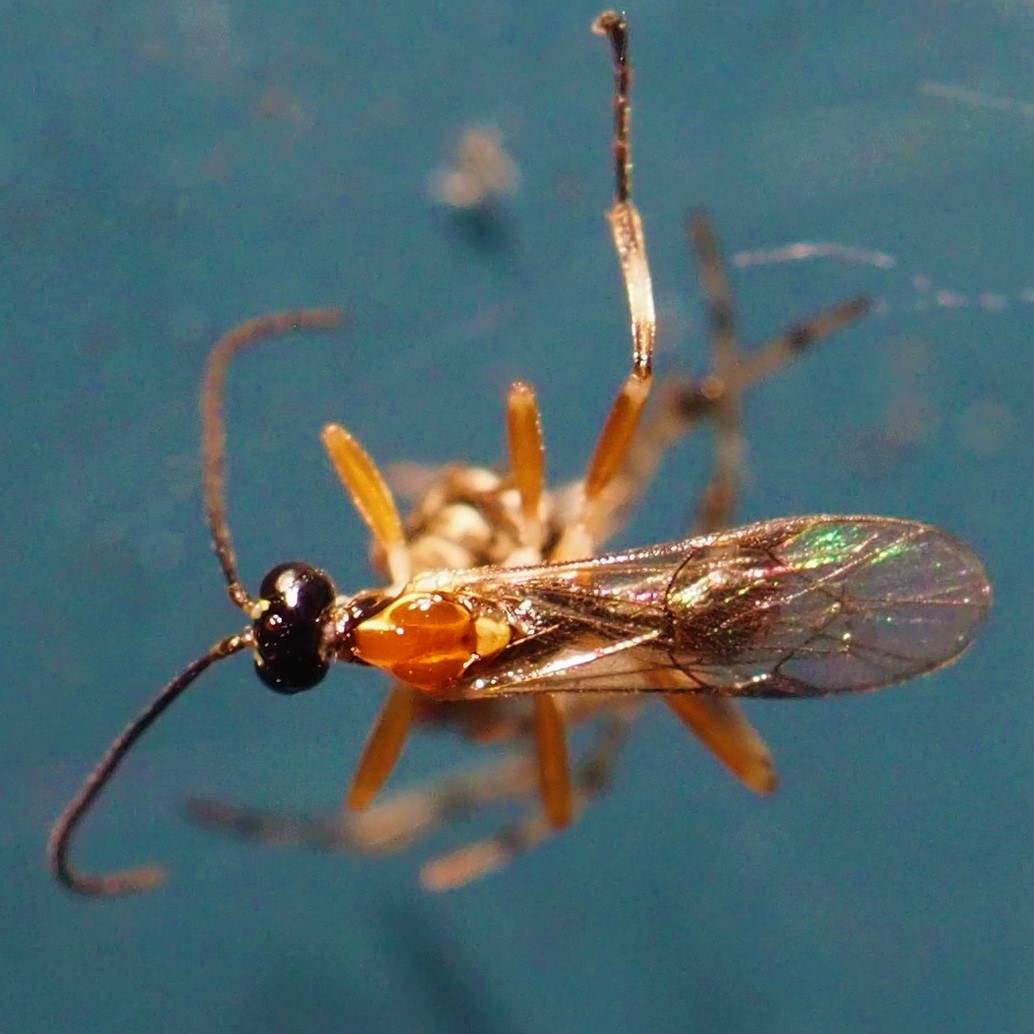
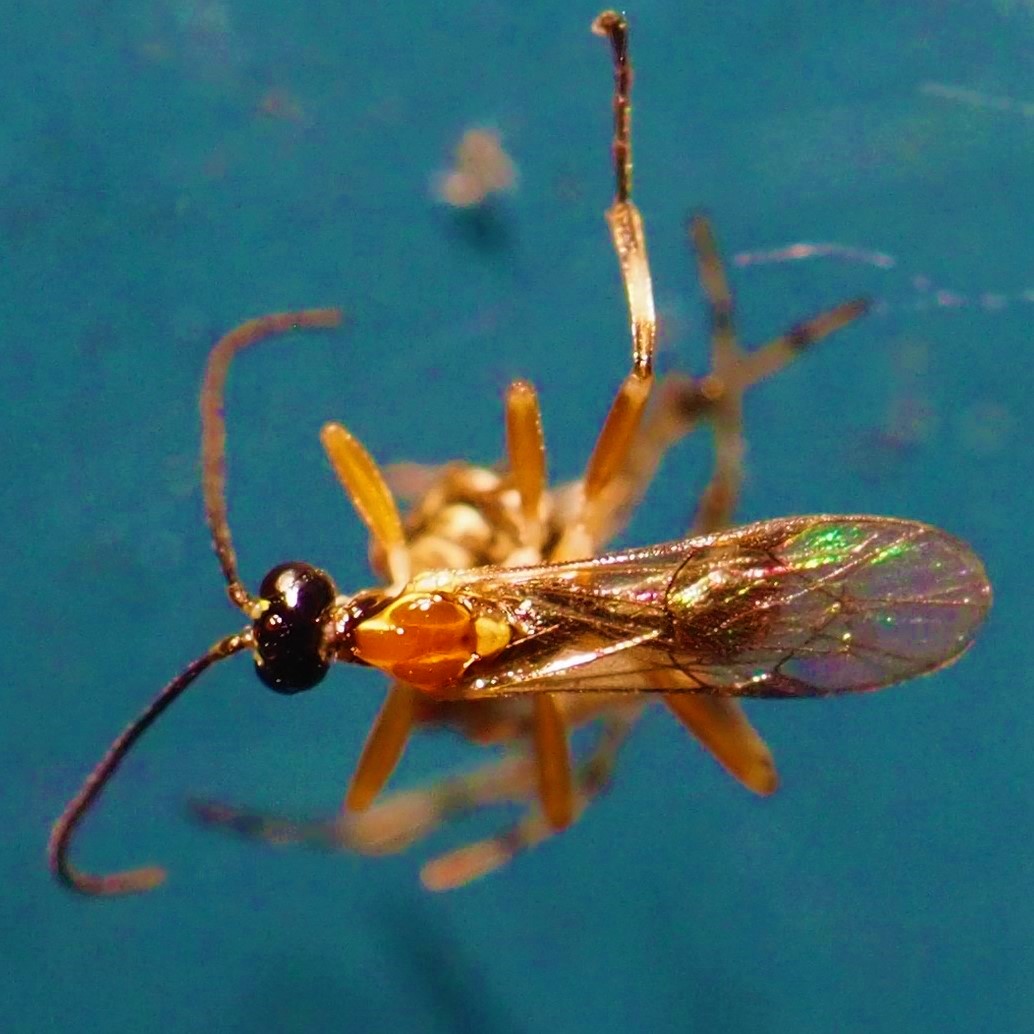
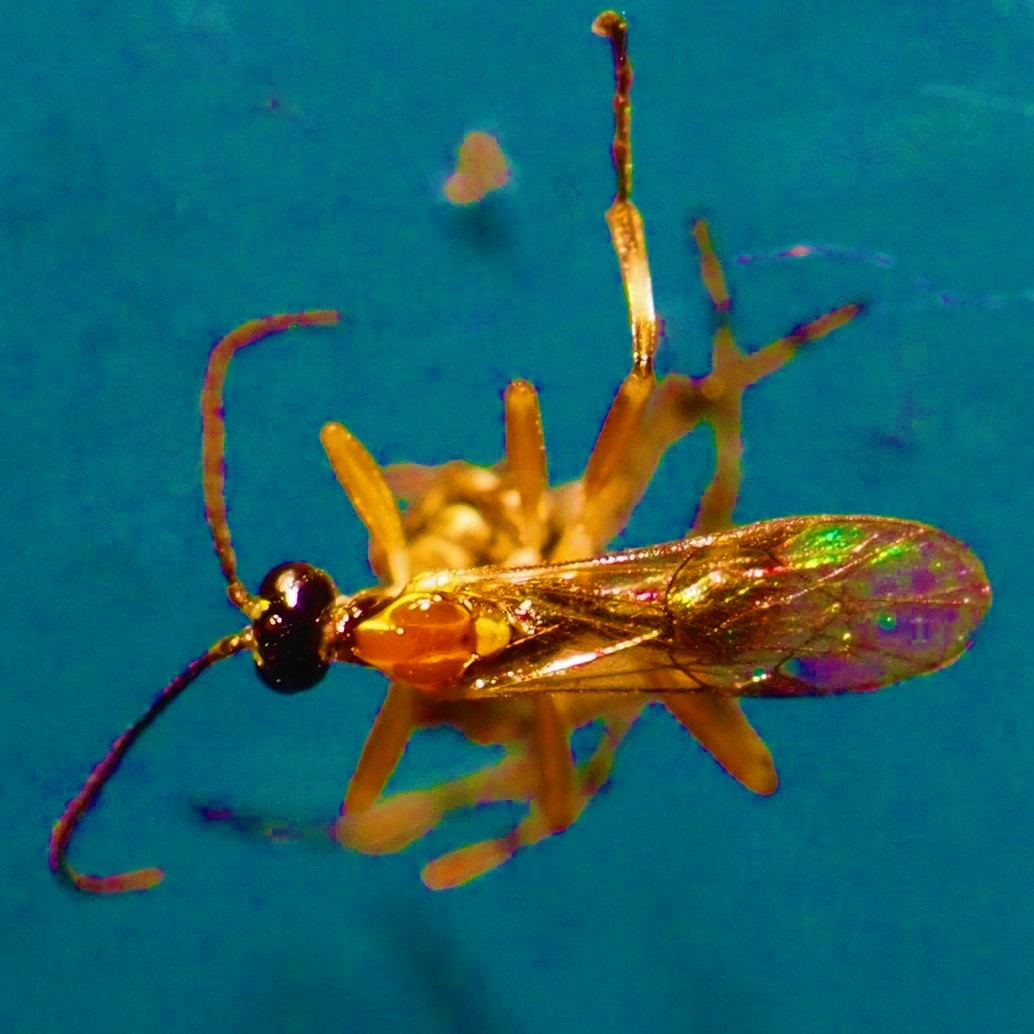
The other day I was looking at some of my Barklice pictures. This one is of an adult Metylophorus novaescotiae.
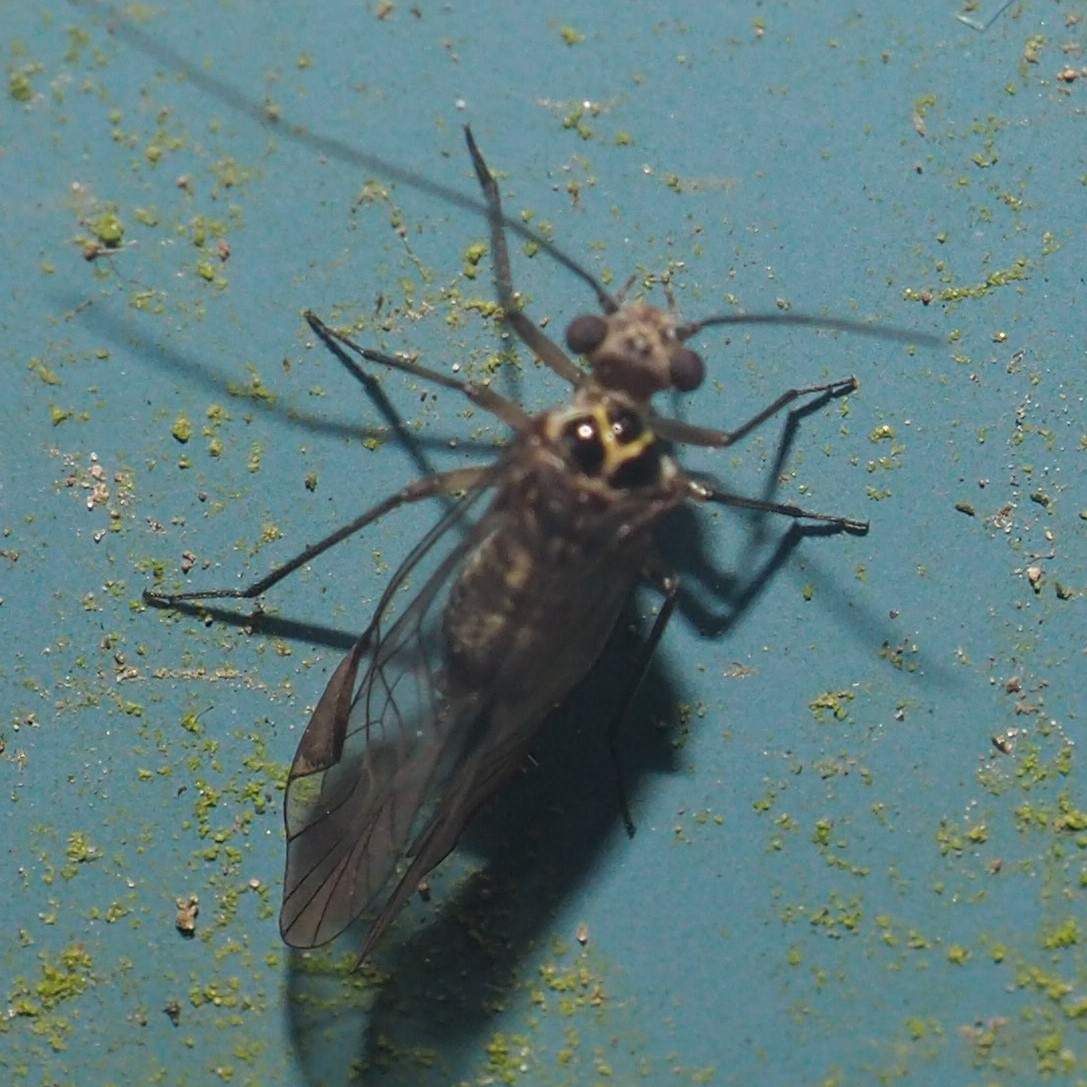
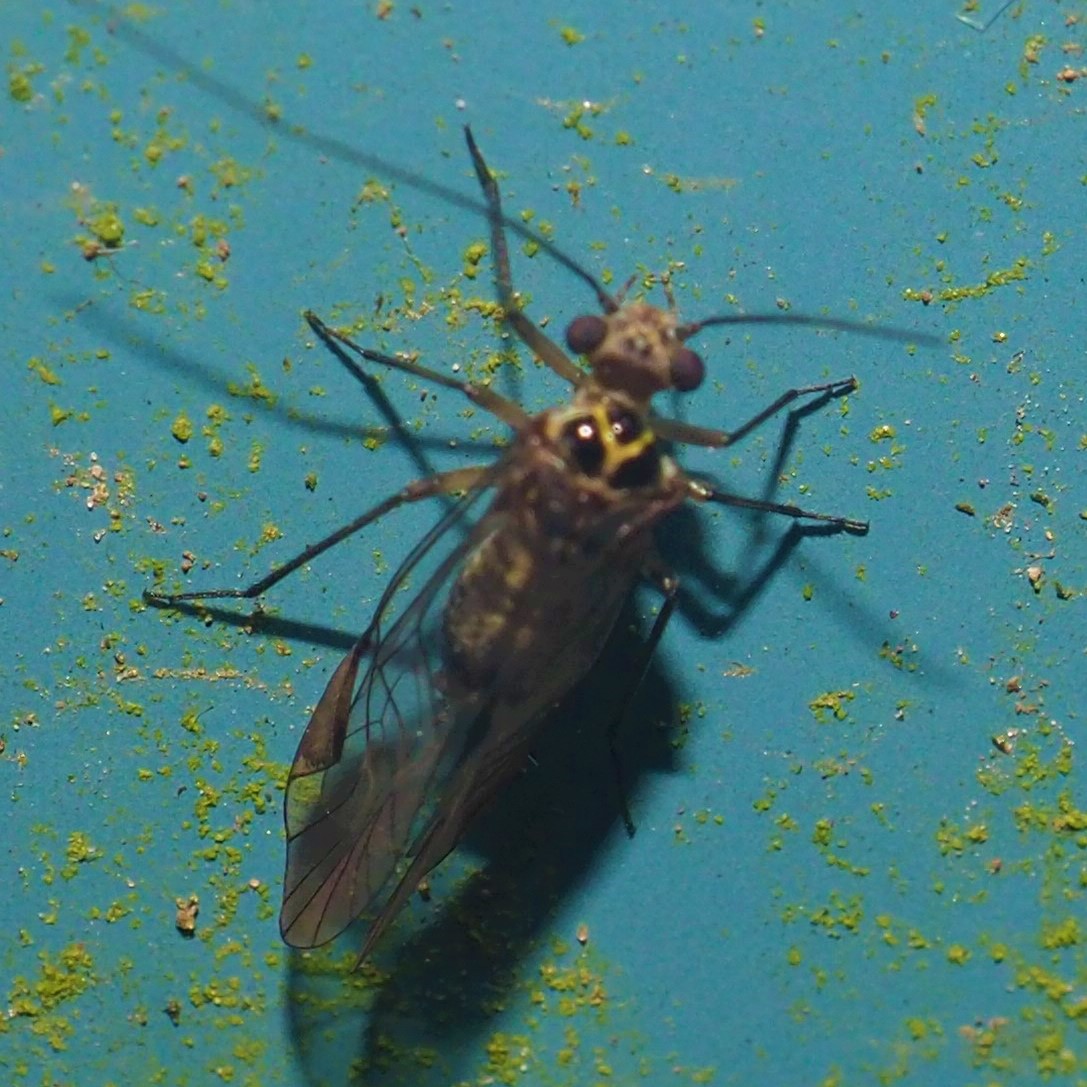
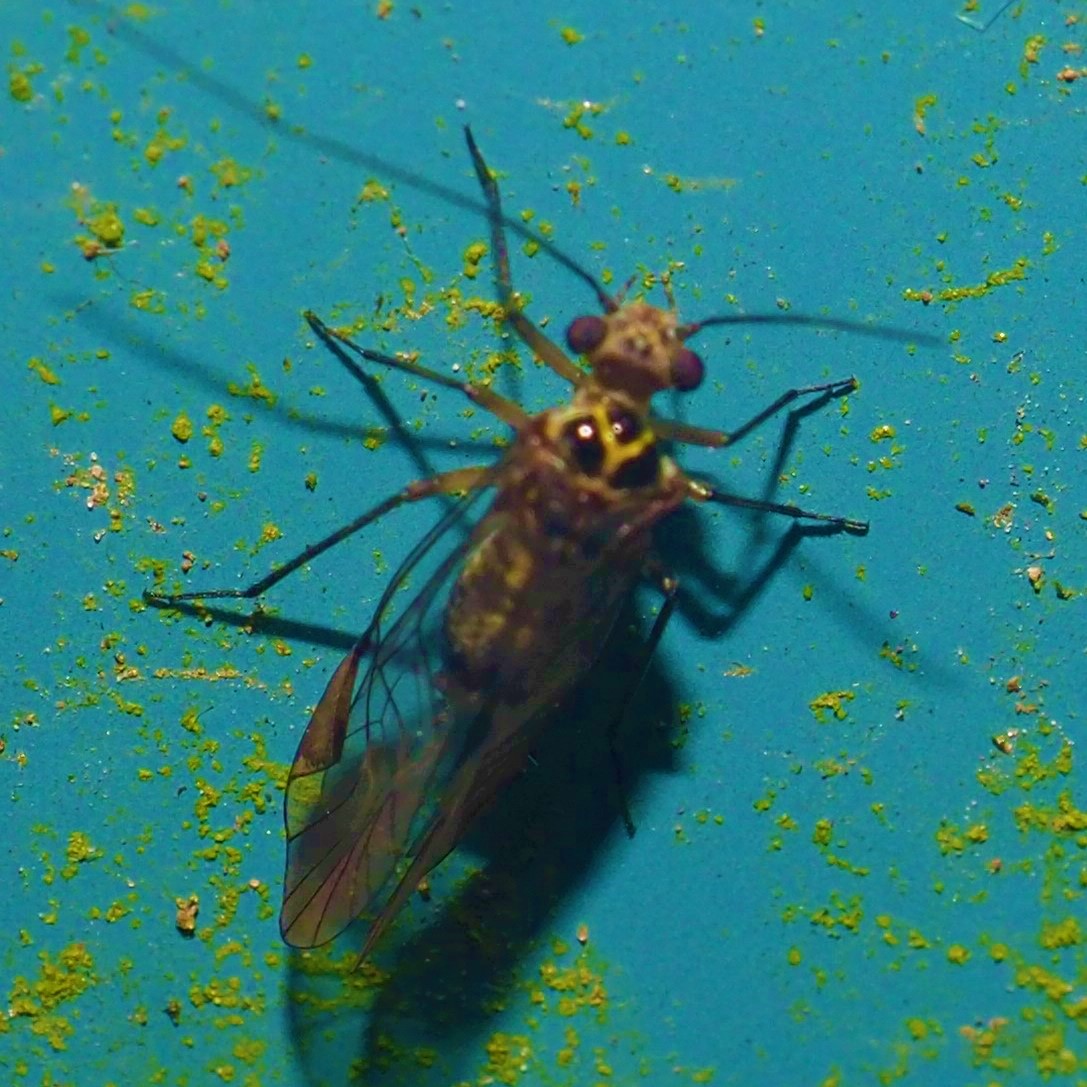
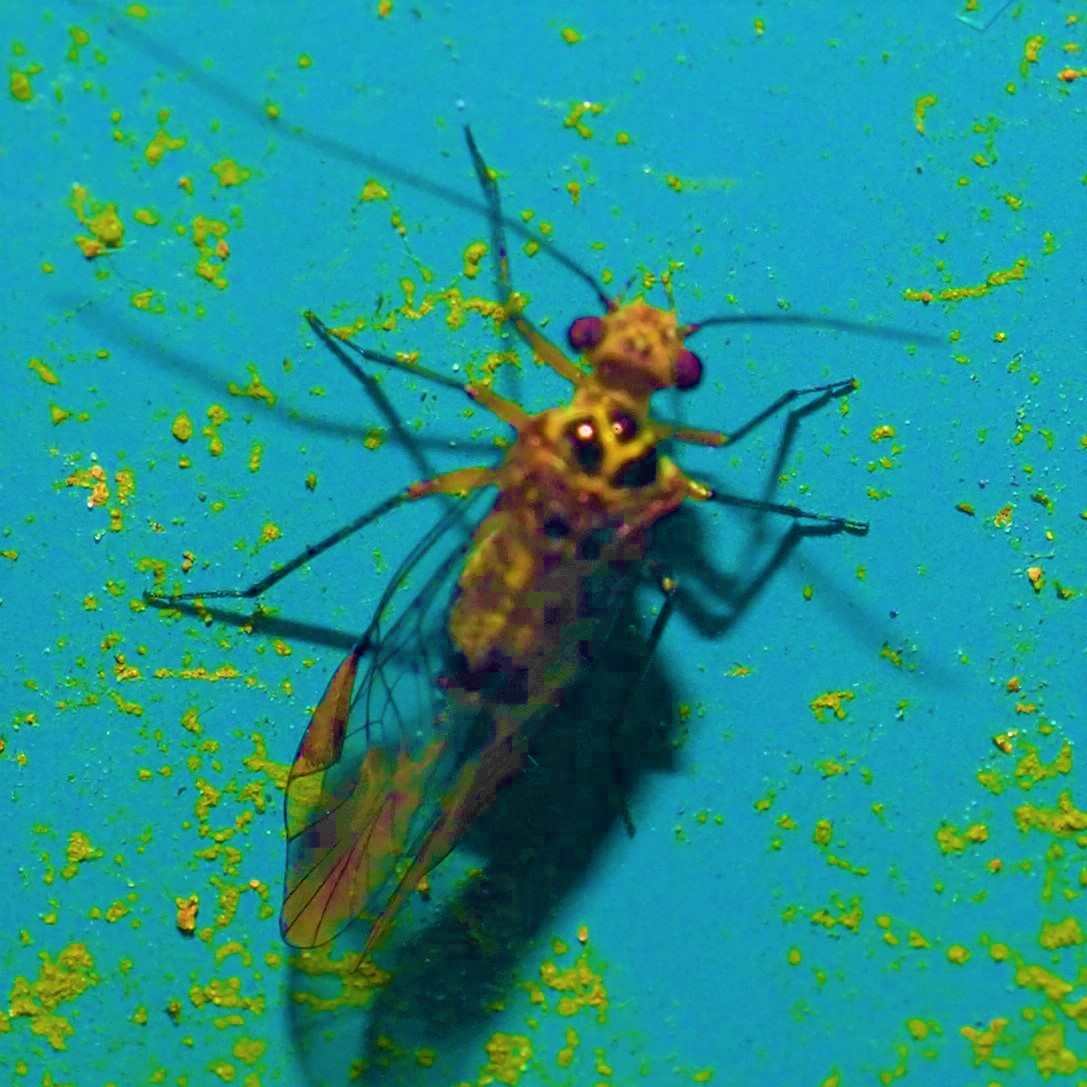
The same Barklouse, in another view.
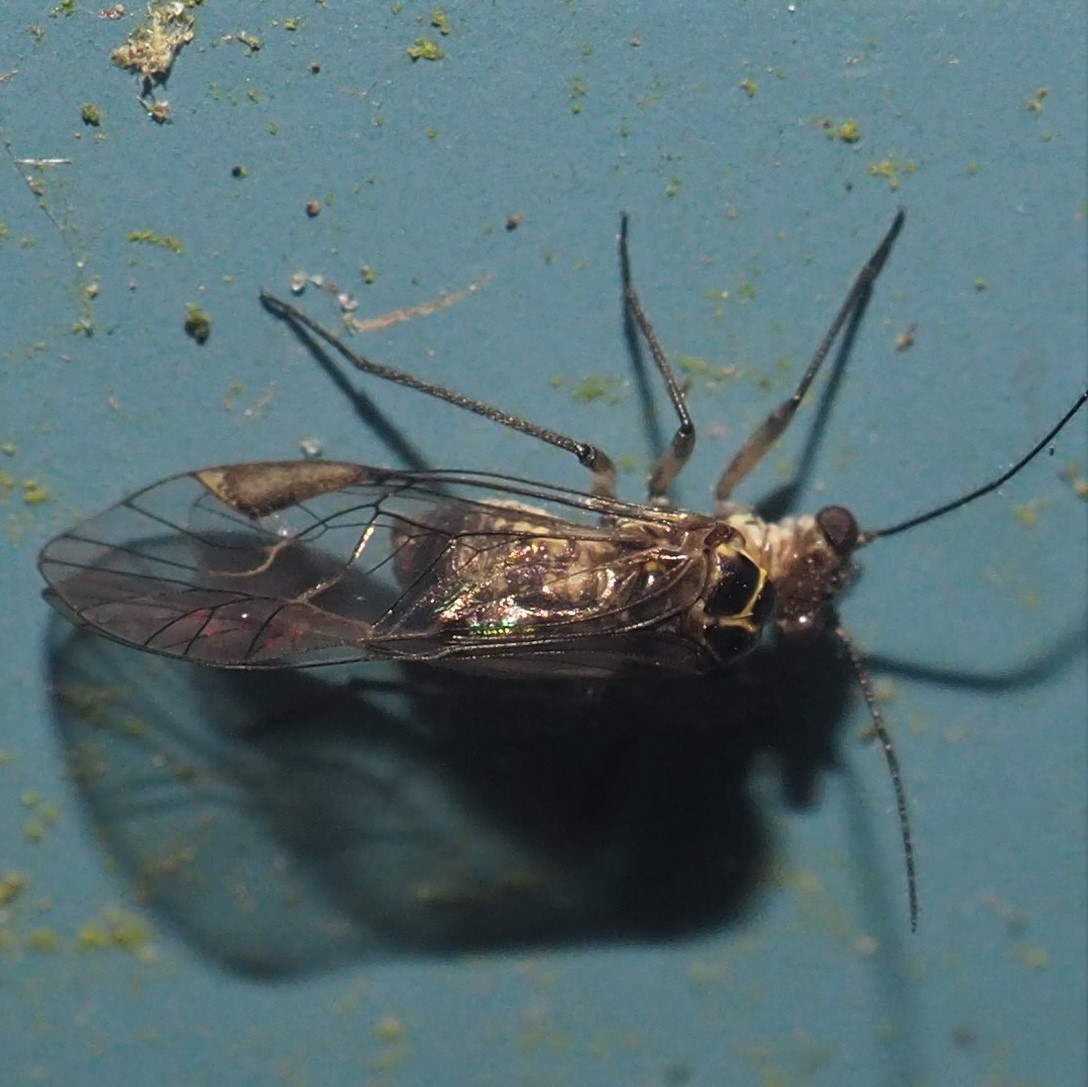
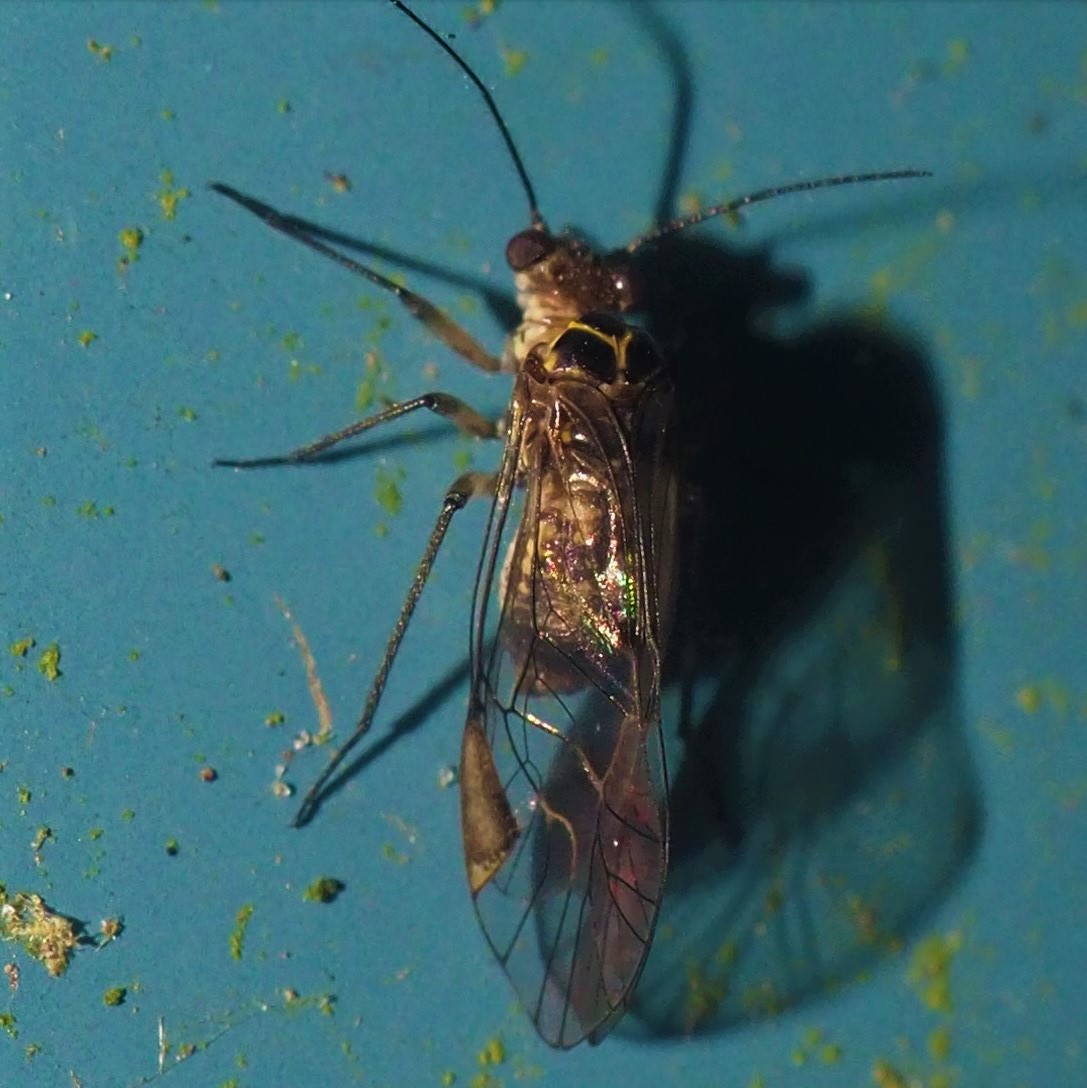
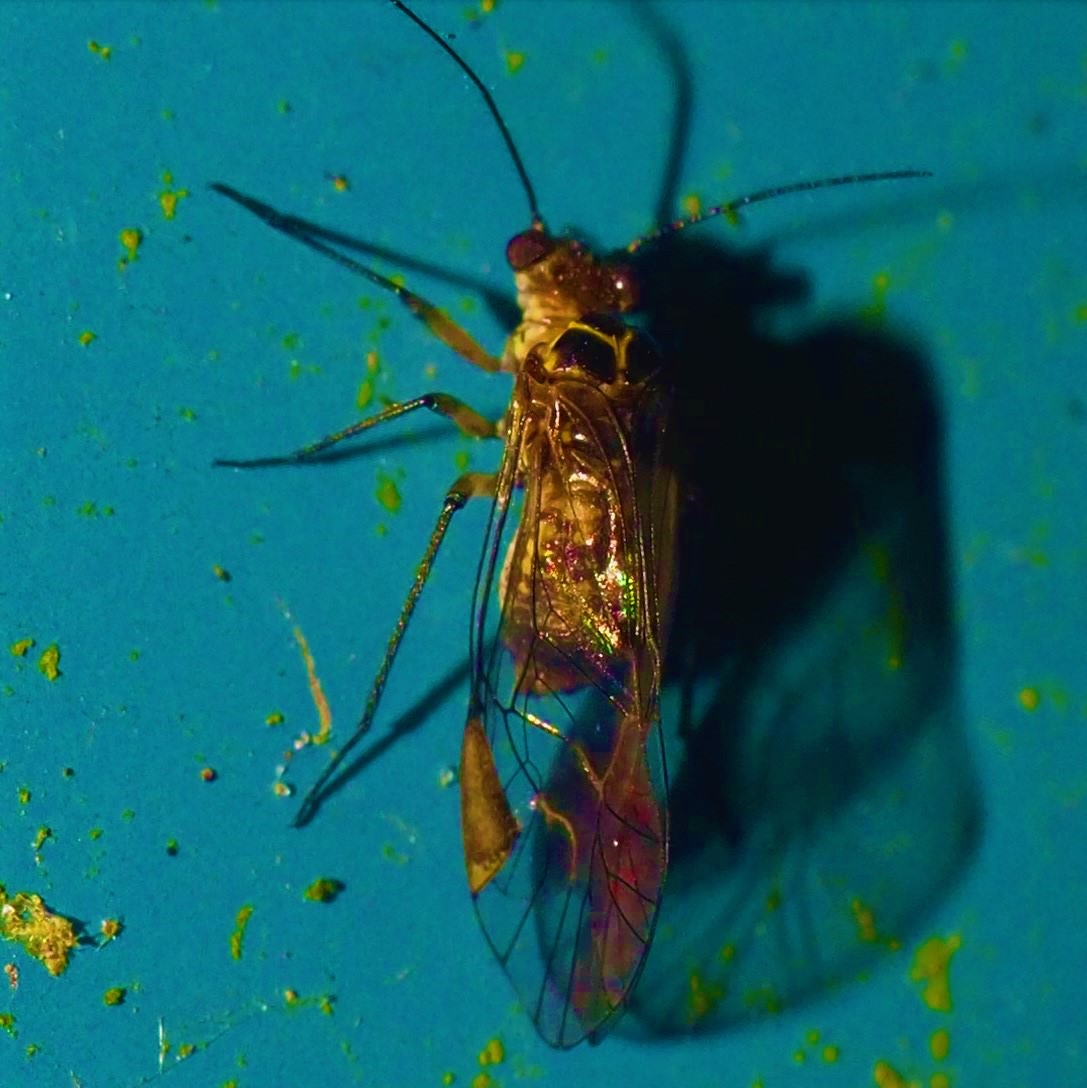
Yet another view. Ironically, the pterostigma is not influenced, but watch the cell beside it!
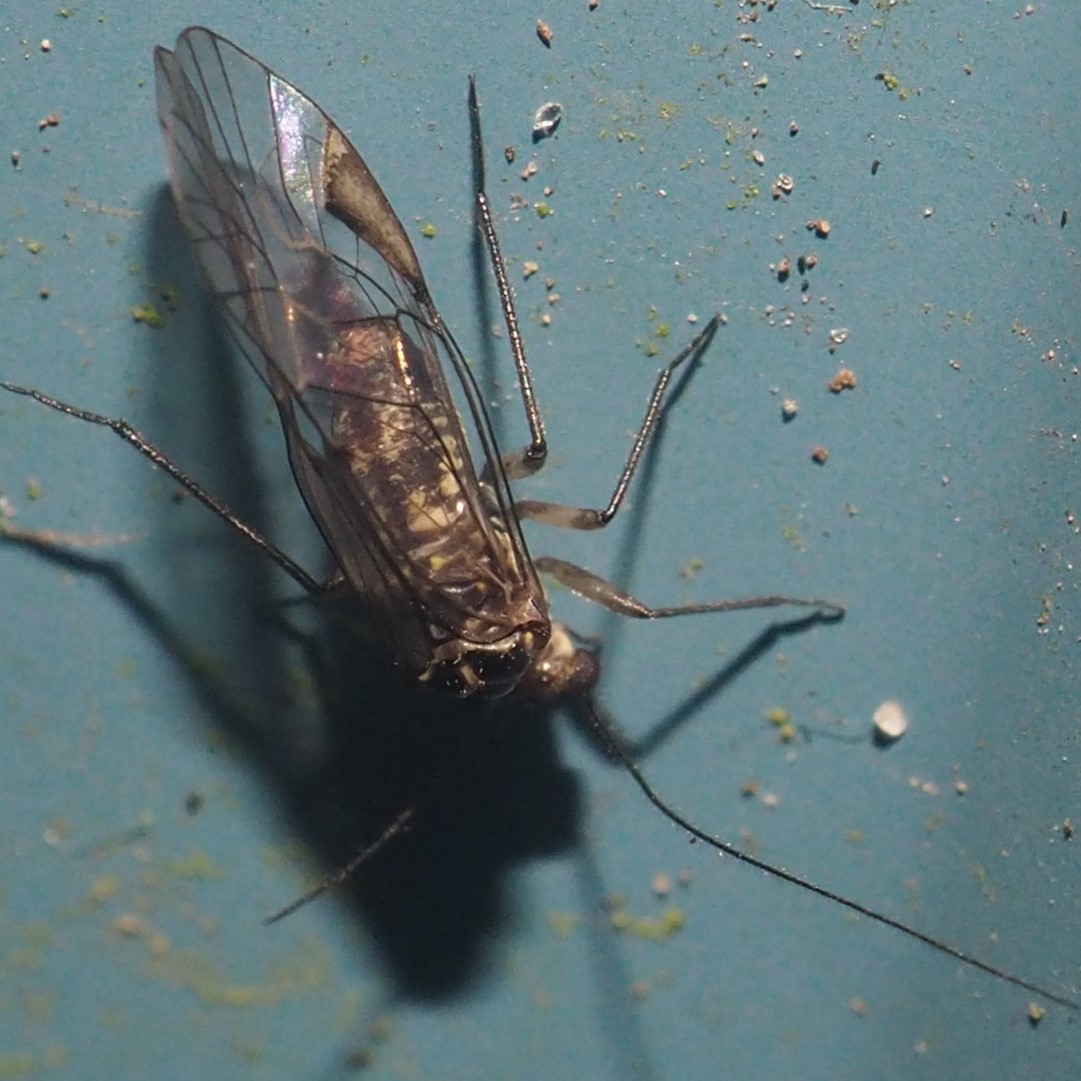
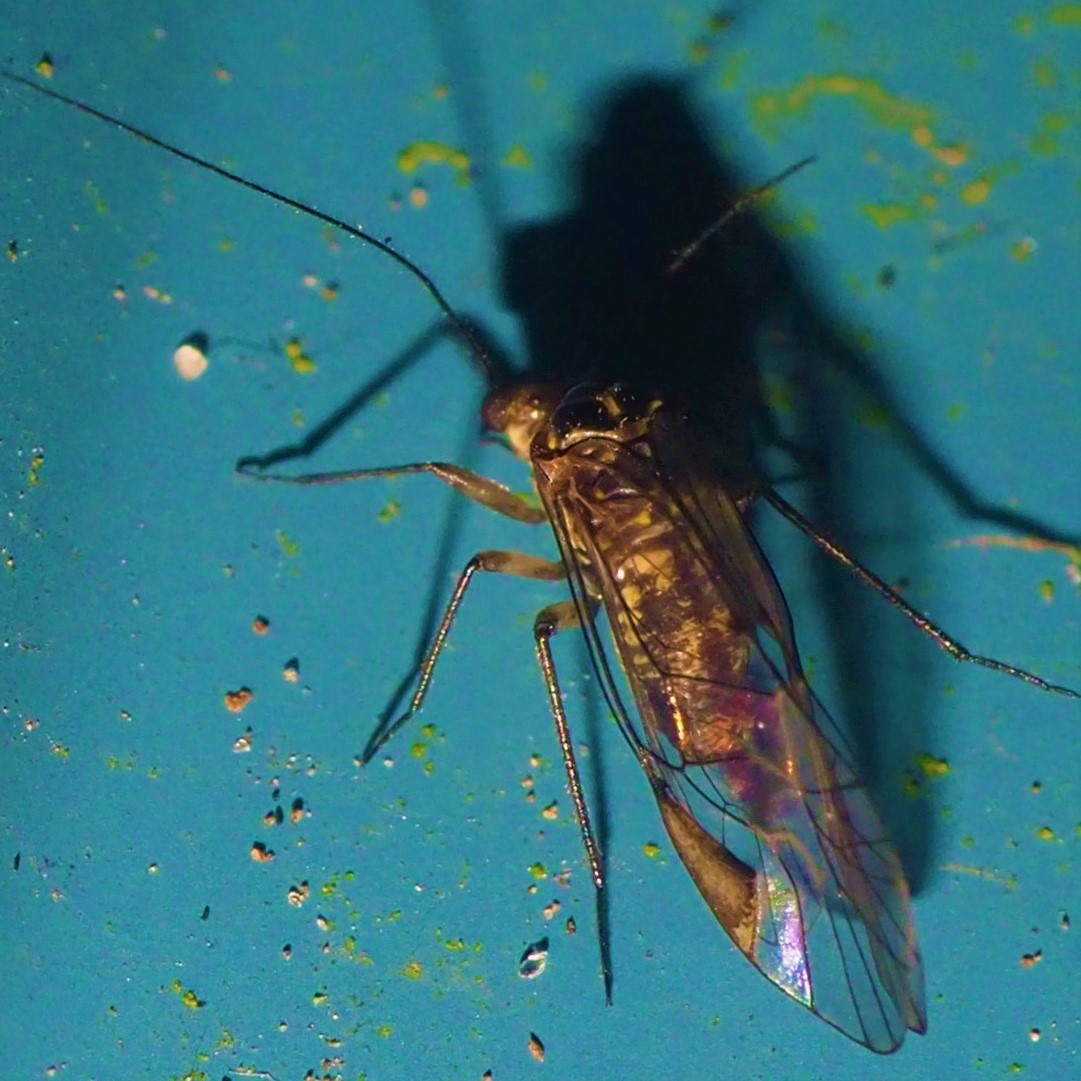
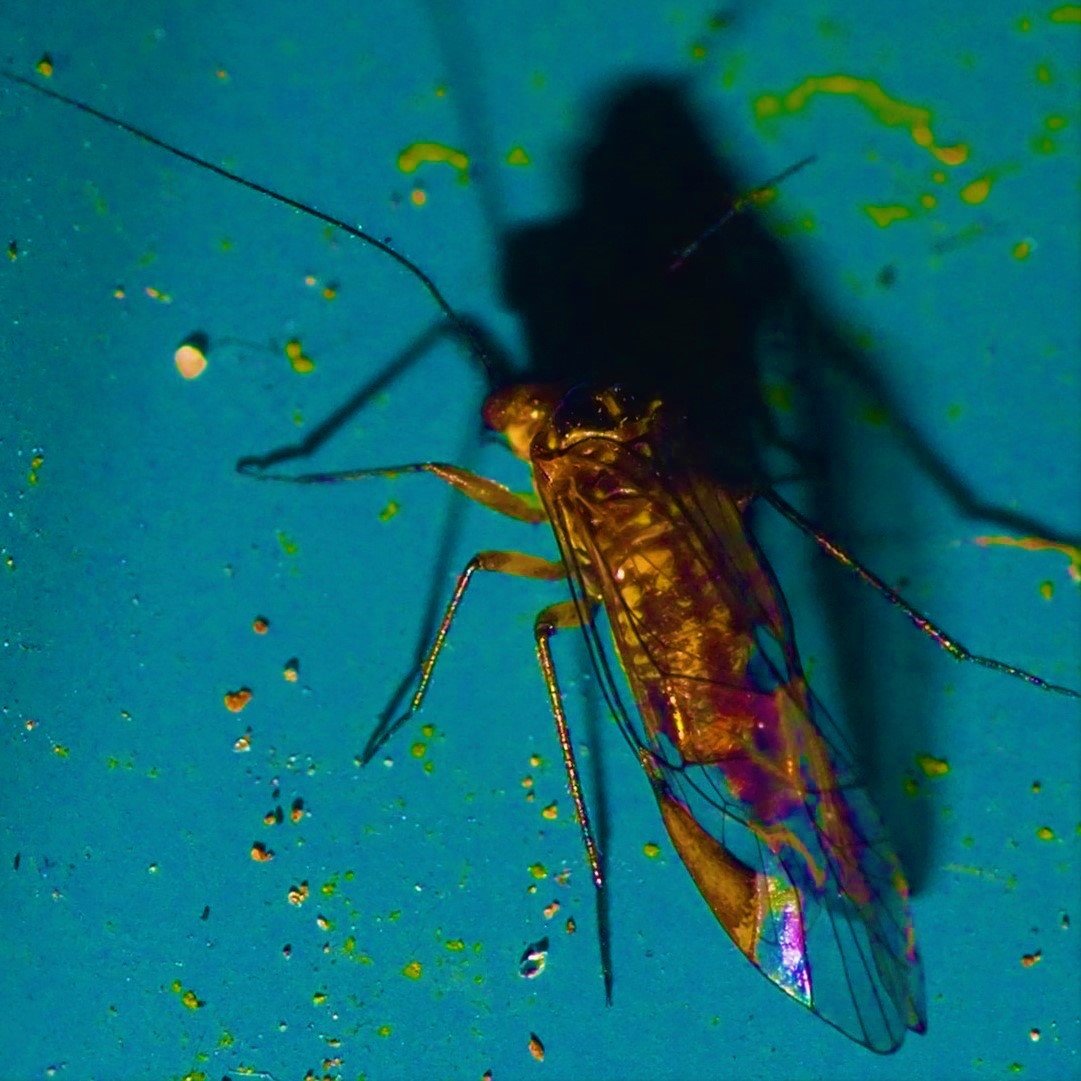
Here's an odd one. The wings of this little Midge have a lot of blue WIP color in them, but why should the legs also have this coloration? Chris Angell suggests the blue is from the background reflecting off the legs. I'm still trying to see how that might work!

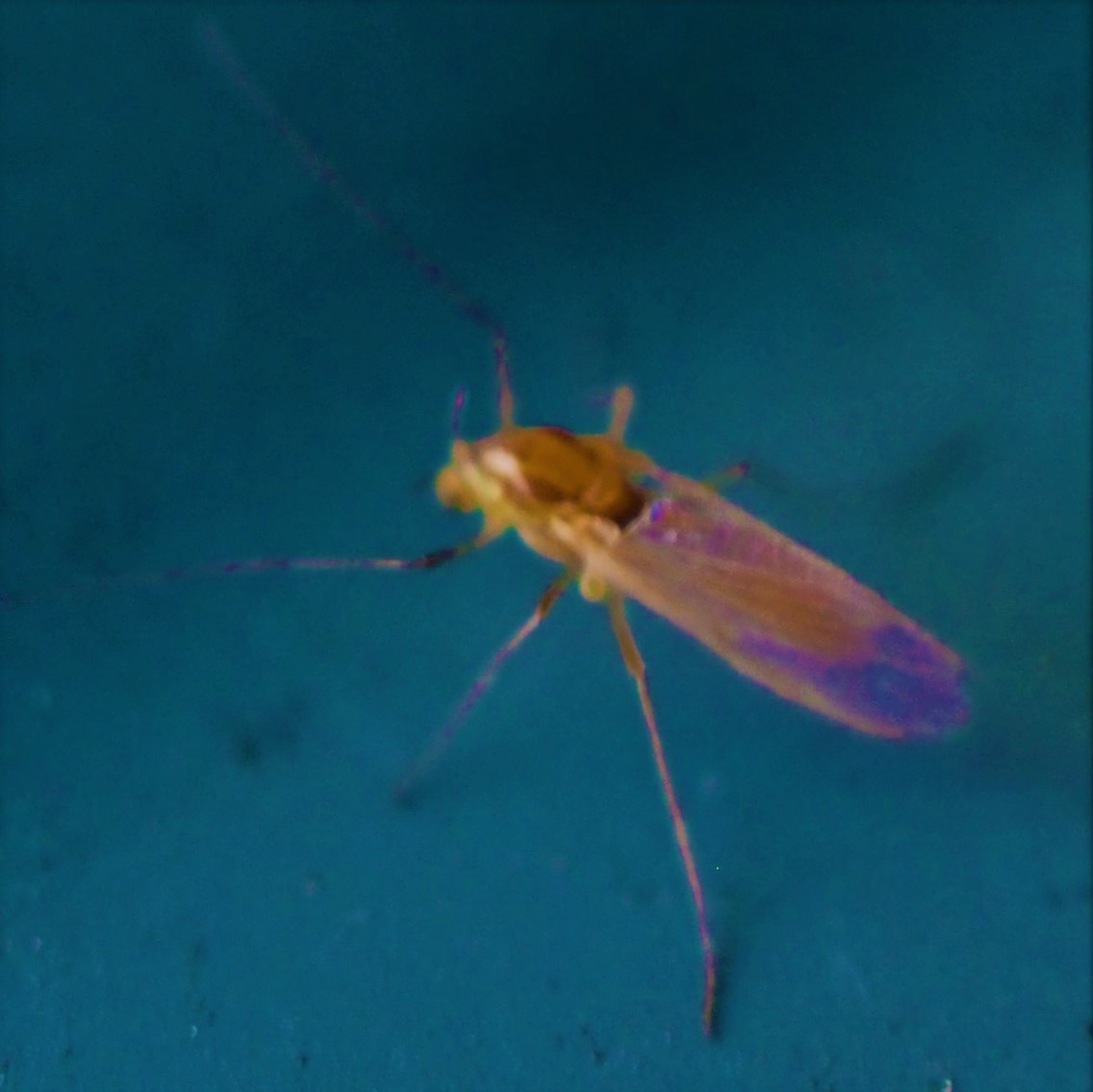
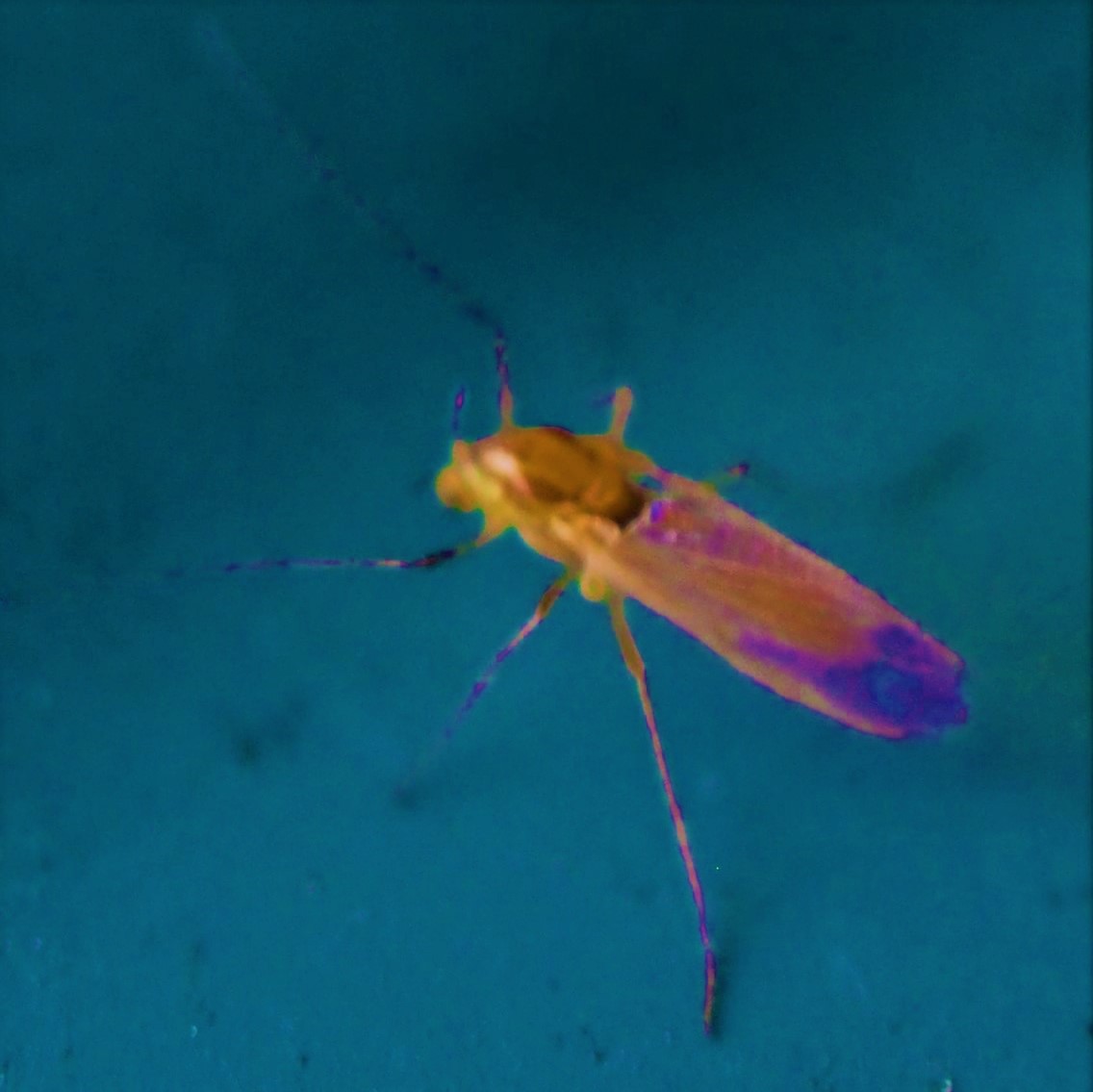
This winter (February 23, 2023) I found this Stonefly. It is likely a member of genus Allocapnia (help given for this ID by Denis Doucet (@nbdragonflyguy)), a Small Winter Stonefly. This New Brunswick colleague suggested "chromatic aberration" as the reason for the bewitching colors in the third picture. I don't even know if that is the same as WIP, especially since the color isn't limited to the wings. But it's so cool, as we say in the Science community.
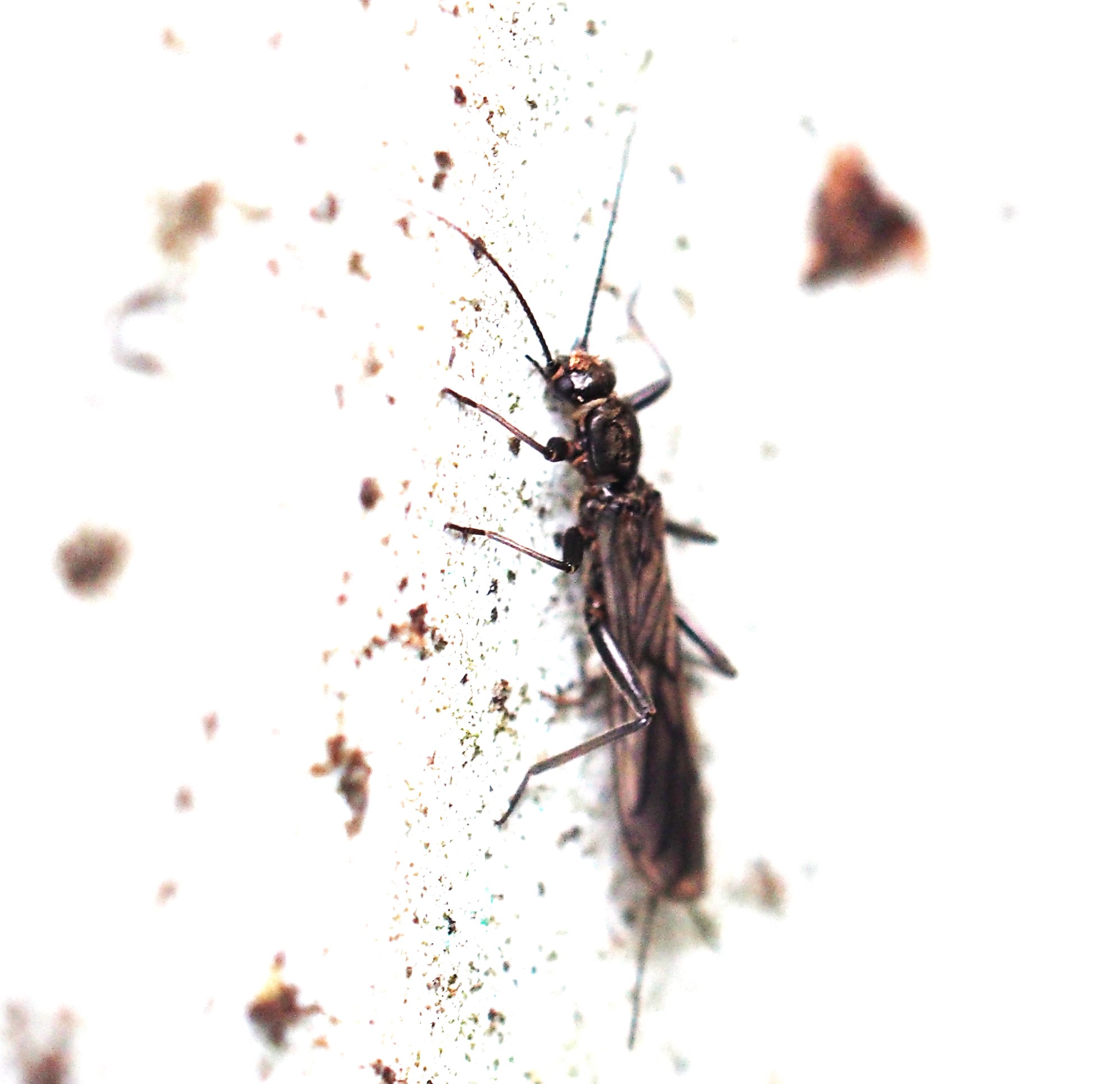
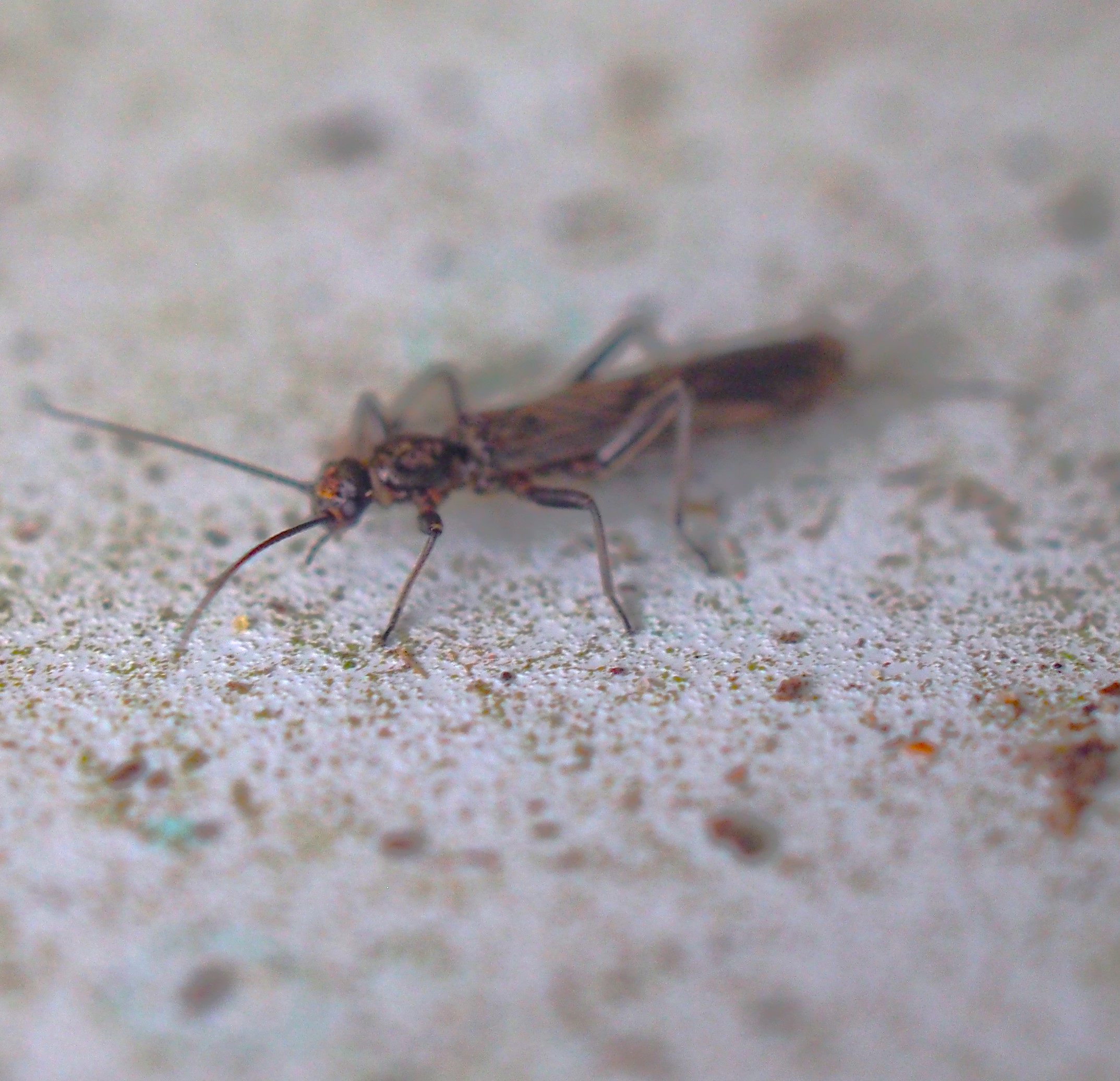
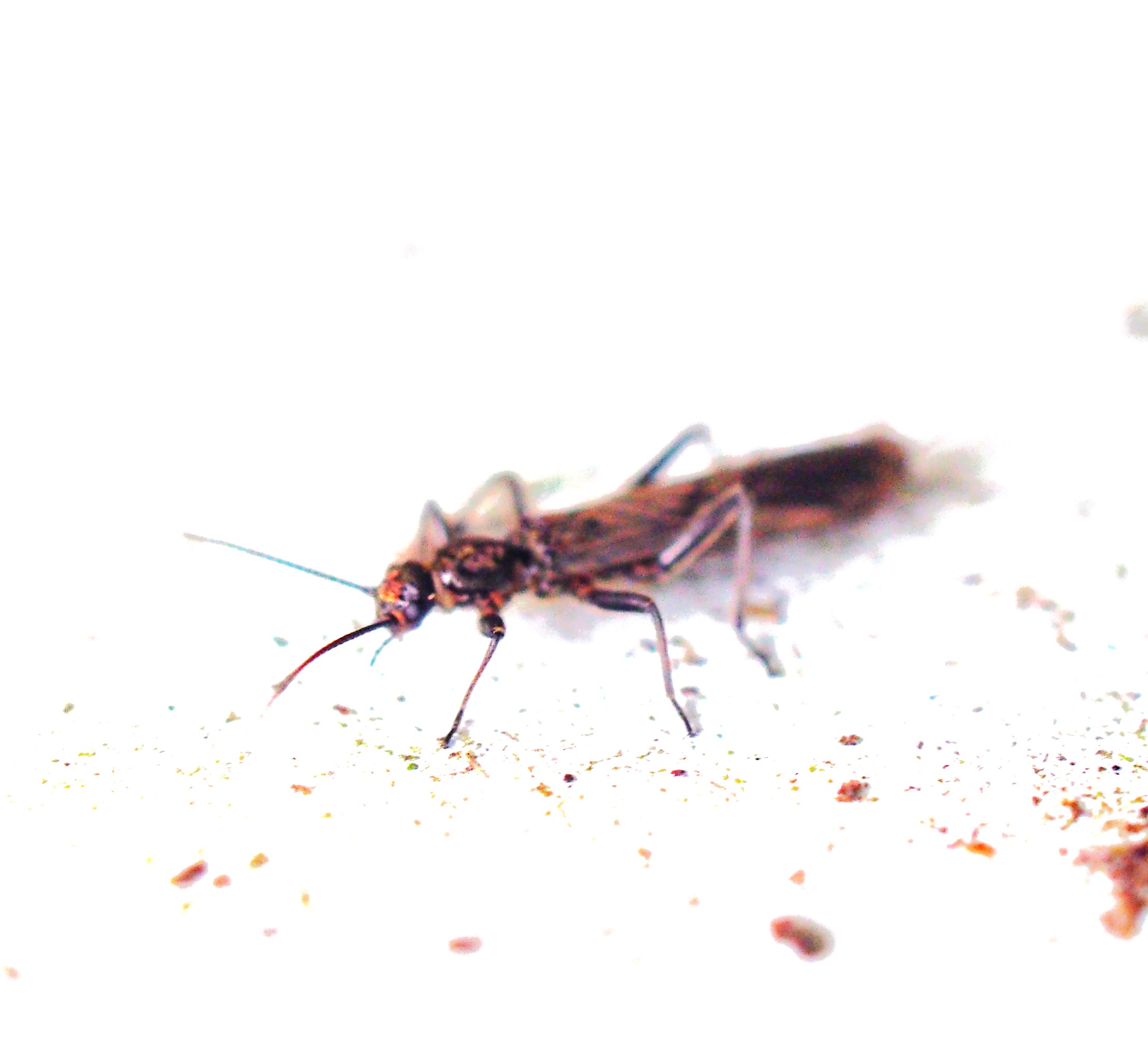
Back to main menu
copyright Martha O'Kennon 2022



















































